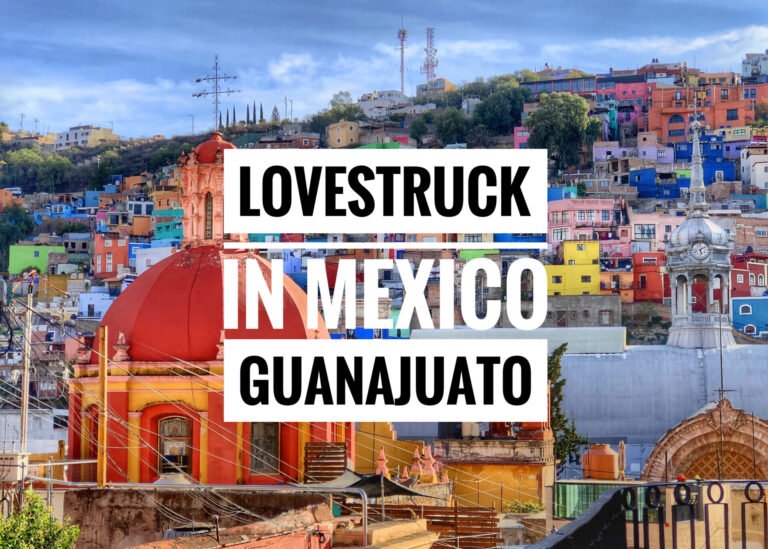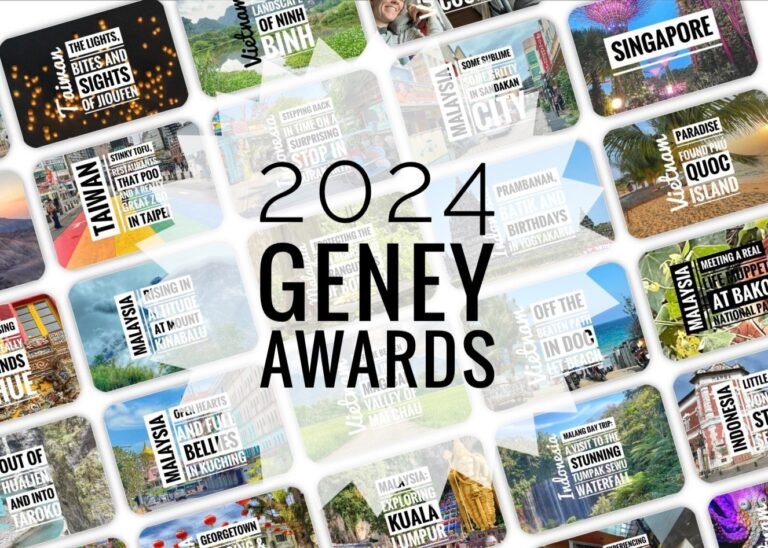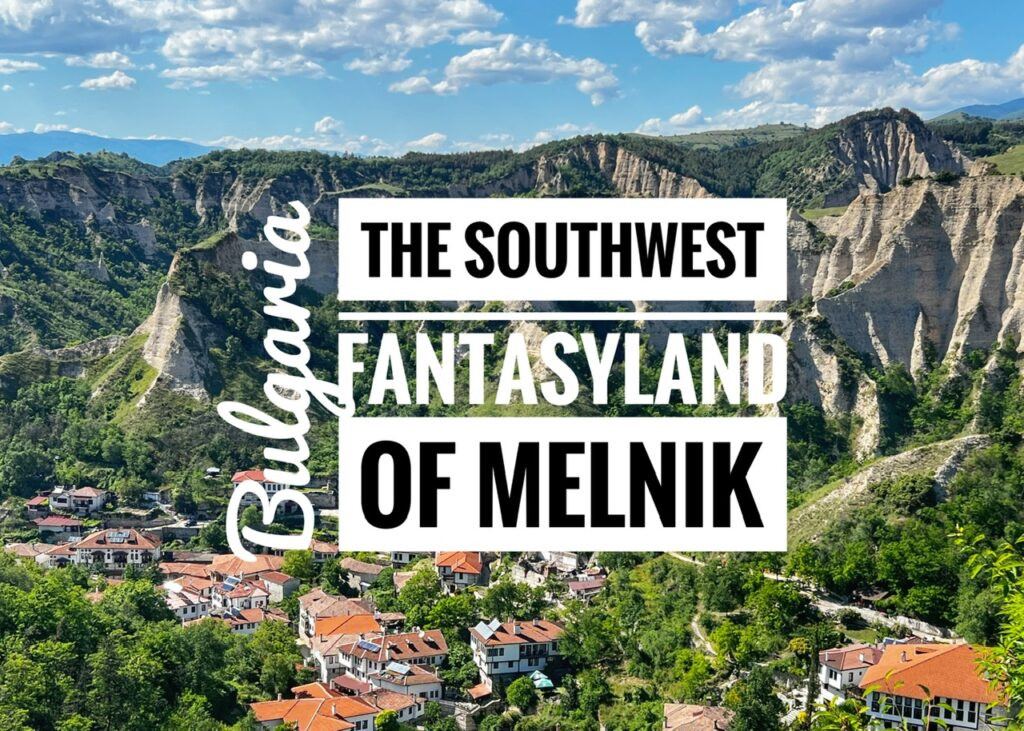
The Extraordinary Village of Melnik
To celebrate Greg’s 47th birthday, we chose to have an overnight escape to the seductive teacup-of-a-town called Melnik, which we first visited on a whirlwind hour-long dash and drink in 2019, thanks to the inconvenient buses we had to catch from Blagoevgrad. This time, catching a direct bus from Sandanski, we were thrilled to spend more than 24 hours in this heritage gem, which still holds its honor as one of our most beloved places in Bulgaria.
Melnik is extraordinary. And old. It was founded in the 9th Century and features Bulgarian revival architecture, mixed with traces of Byzantine and Ottoman influence, a 2000-year saga of winemaking and, what actually looks like the icing on the cake…the wondrous sandstone pyramids, which seem to drip and meld into the lush and forested surroundings.

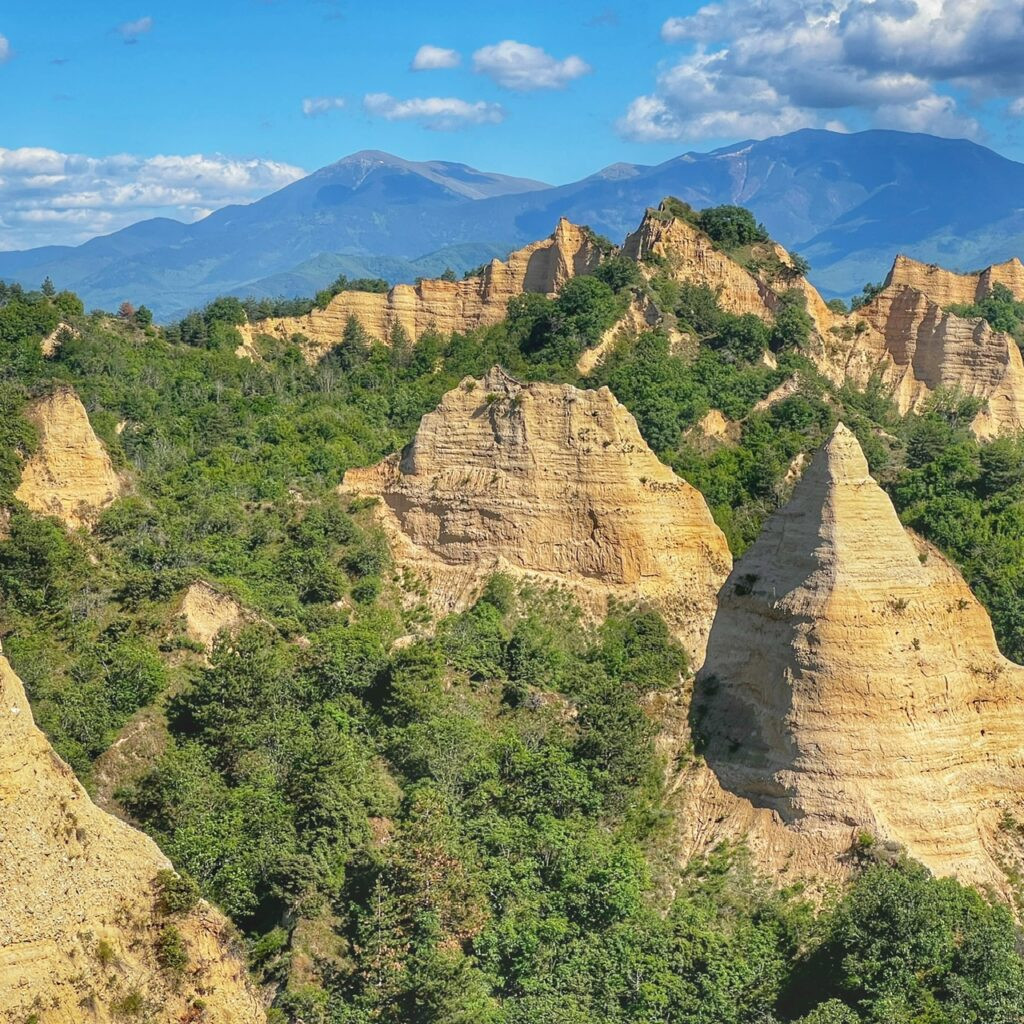
A bird’s eye view of what is also known as the smallest town in Bulgaria, which is around 200-300 people, depending on the year and the source. And this time, we would also have ample time to hike and soak in these unique sandstone landmarks, which are actively eroding, and constantly reshaping the surrounding terrain.
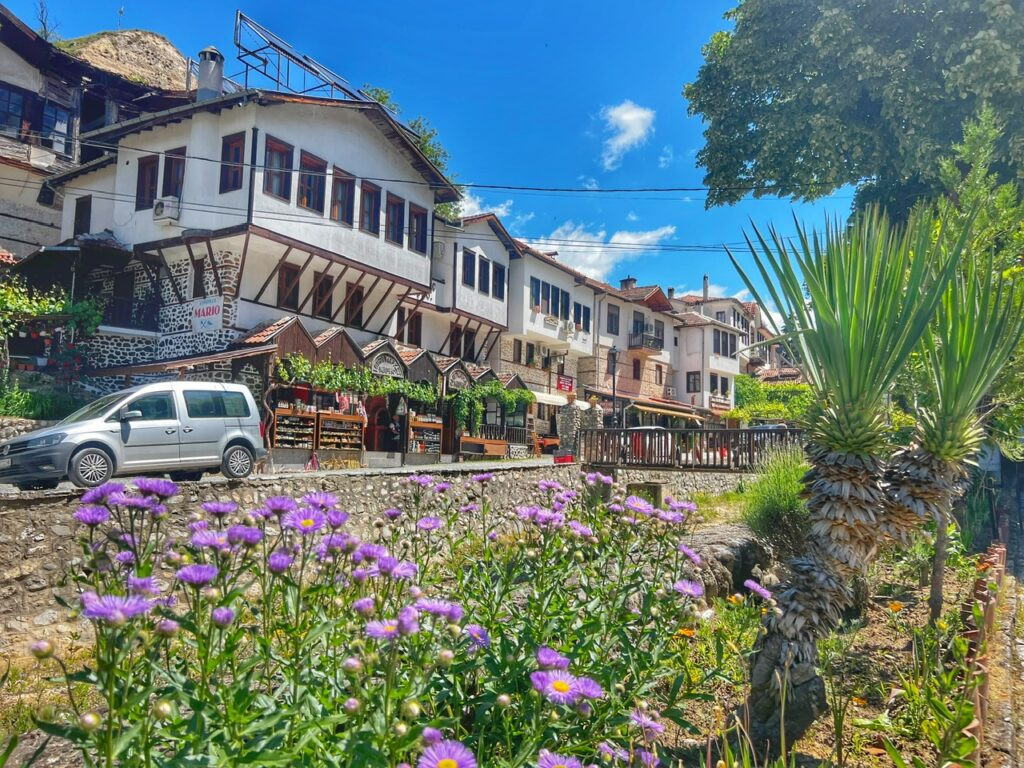

As you disembark the bus, the main street heading into town is instantly photogenic. This is no surprise considering more than 100 buildings in this small area are classified as “cultural heritage” sites.
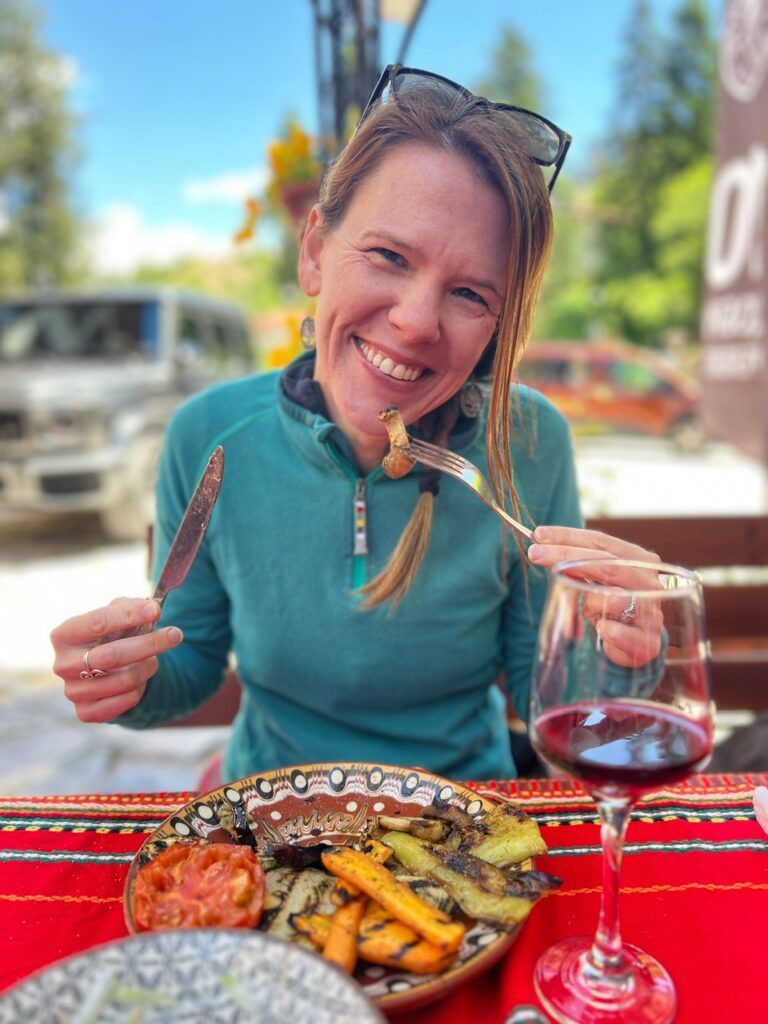
But before we would truly explore, it was time for Mandy to finally chow down on some grilled vegetables at Bistro Melnik.
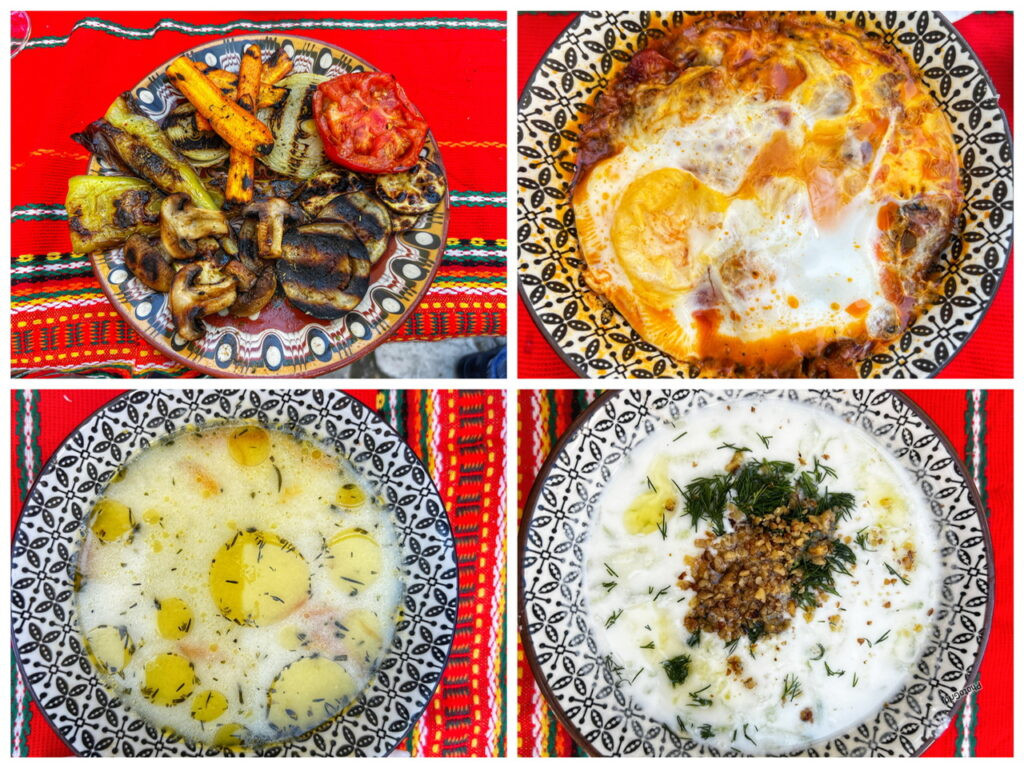
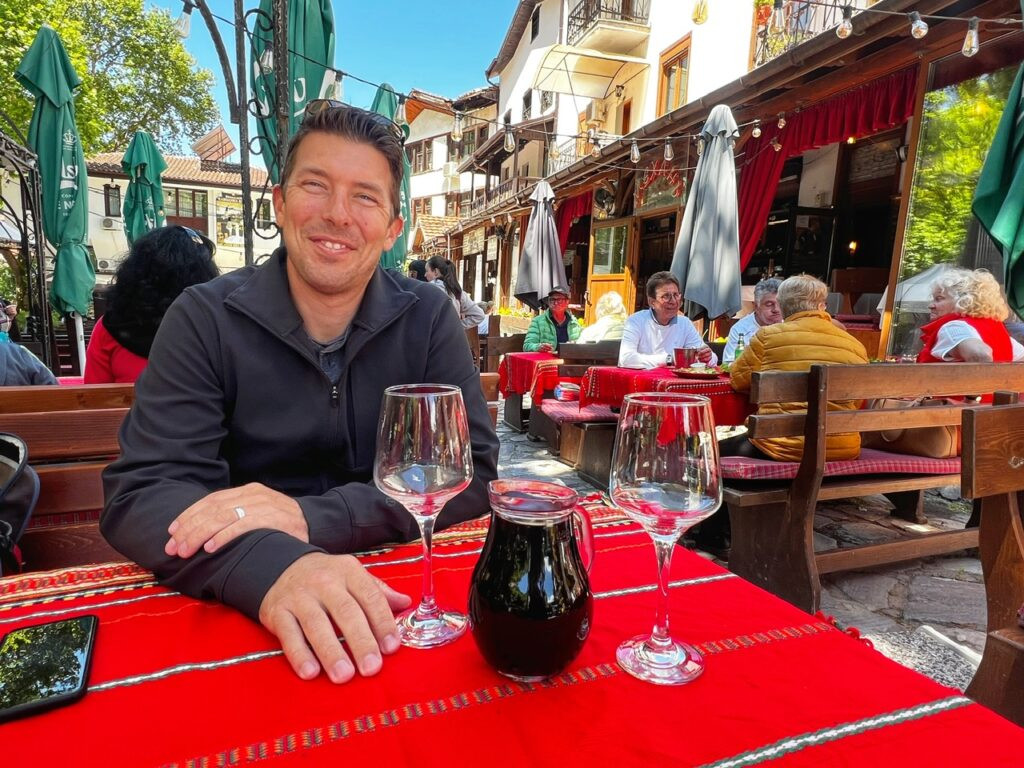
Greg’s birthday smorgasbord also included Chicken Kavarma, which is a traditional Bulgarian hot pot with bubbling chicken, cheese, egg, veggies, and lots of aromatic spices, a chicken soup and Mandy’s other favorite…Tarator, which is a Bulgarian cold soup, made of yogurt, cucumber, garlic and dill. Yum.
Oh, and of course a small carafe of cherveno vino for about $8! Like we’re discovering everywhere, the meal was almost double the price of restaurant meals during our last visit and for two soups, two entrees and the carafe of wine, it was about $30 with tip.
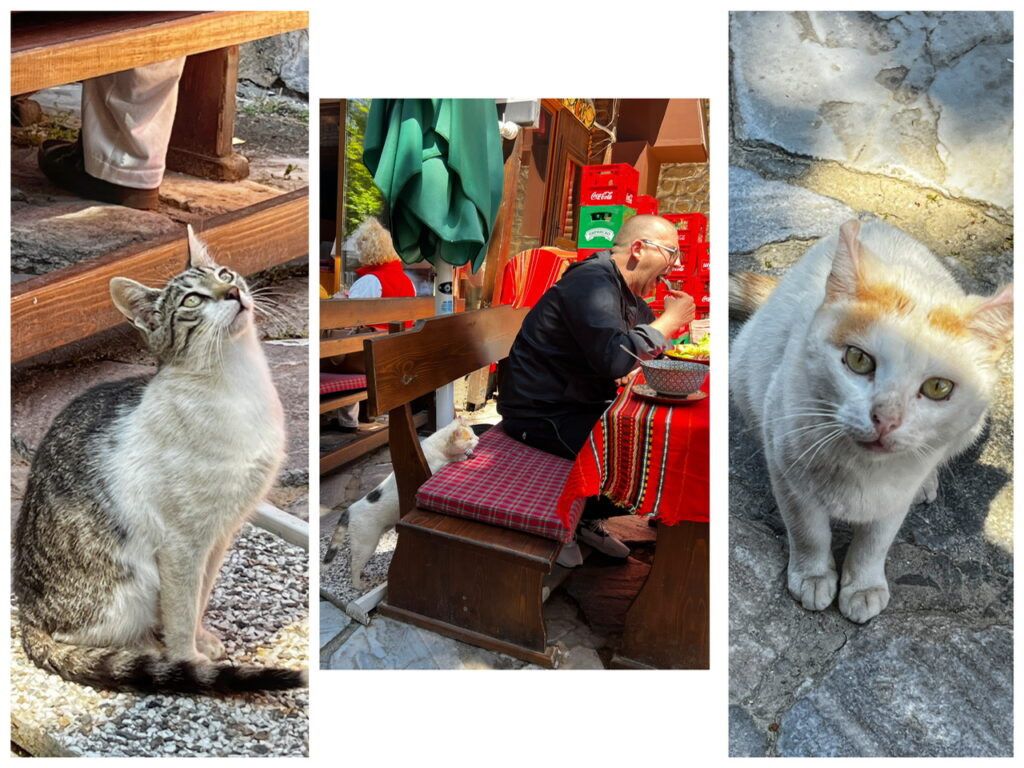
With those prices, it did make it a bit harder to share. (Yet we still couldn’t pass up these faces.) Haha.
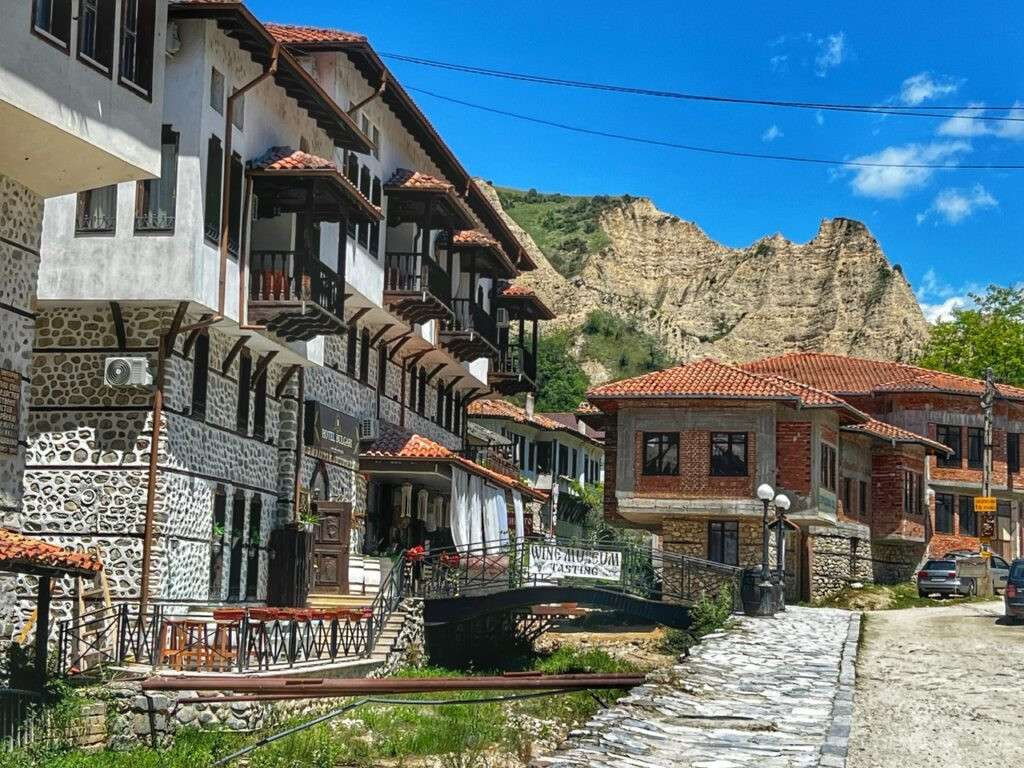
After stuffing ourselves, we worked our way toward our hotel by continuing to walk through town with our one small backpack.

We also passed by several more wine-y temptations, including one with kindergarten-friendly options like cherry, strawberry, apricot, rose, and raspberry.
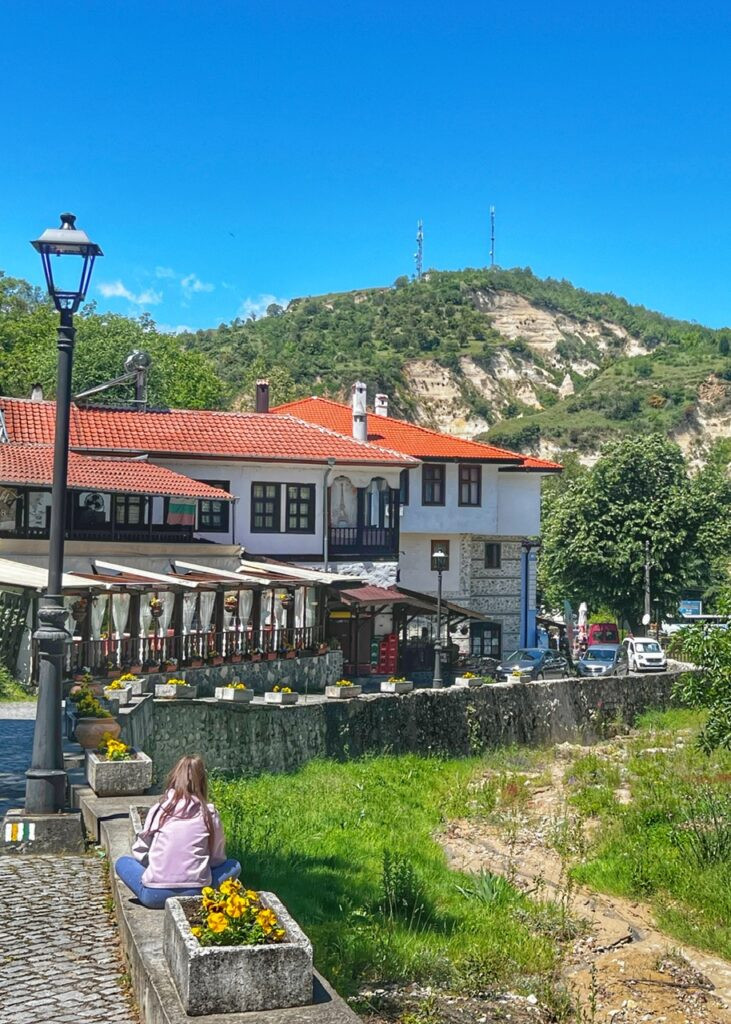
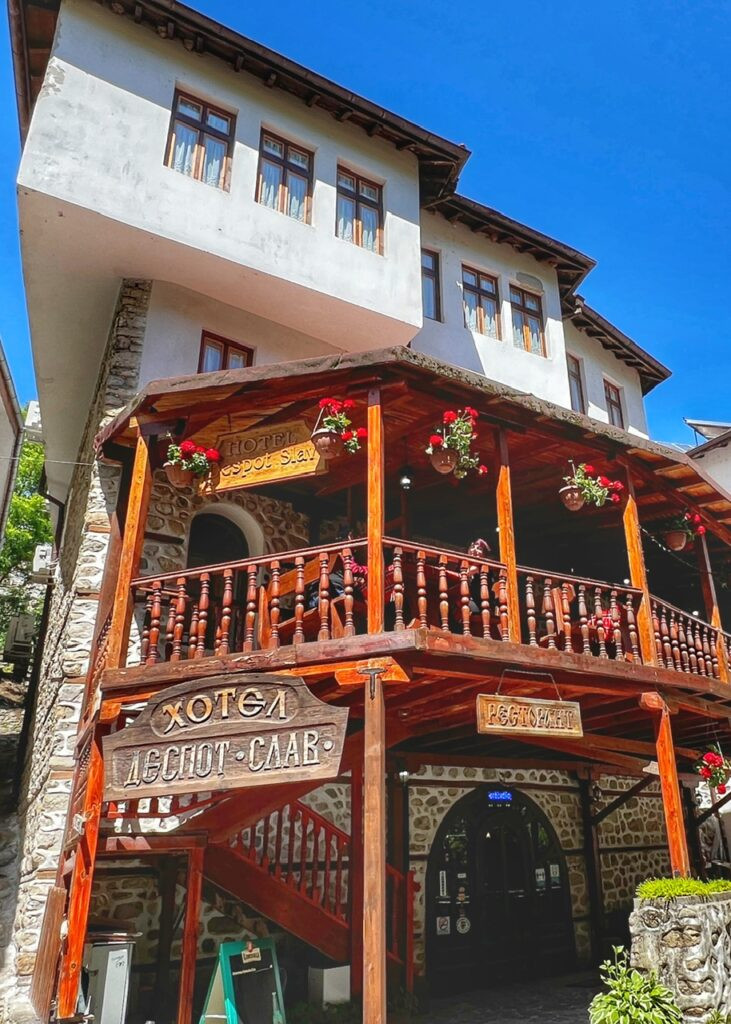
Wow, we could get used to traveling like this! Arriving to our hotel, Despot Slav, we walked into a cave-like interior and were greeted by a slightly flustered but smiling lady after Mandy jingled an antique desk bell. The lady, catching our hellos, immediately asked if we spoke Bulgarian and proceeded to speak in Bulgarian, whether or not she knew English or not. They seem to do this in the villages. At least it’s good practice….and we’re not totally clueless.
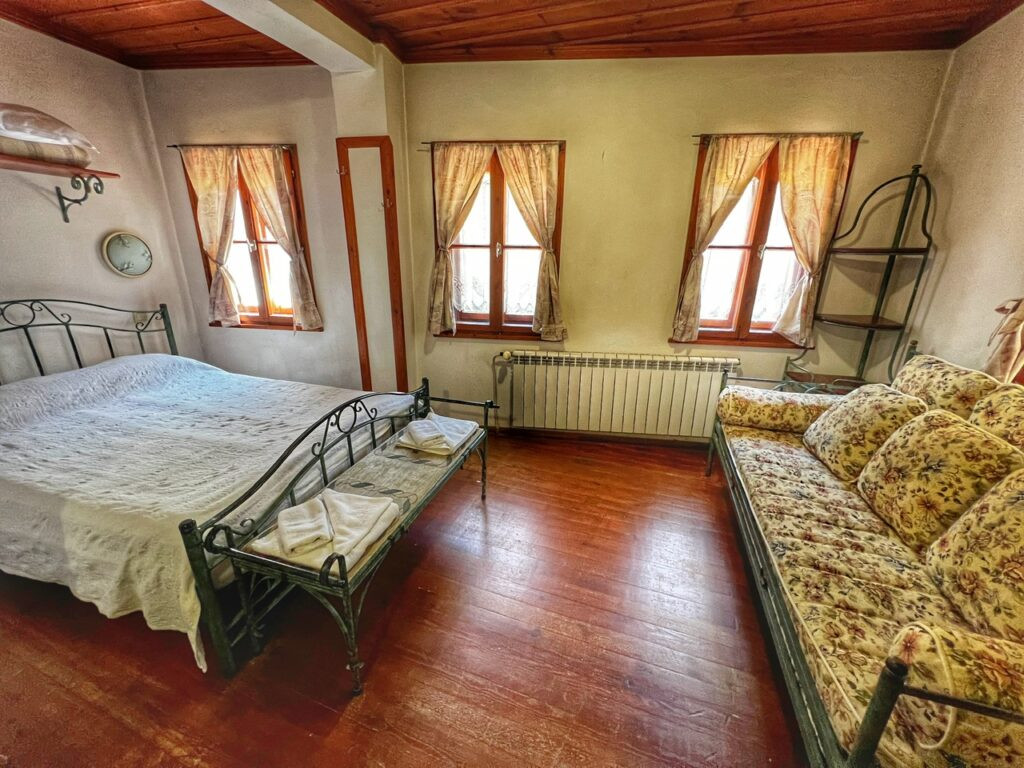
Our room in the historic hotel was on the third floor. It was quite simple and cozy, but we couldn’t believe it cost $60 for the night.
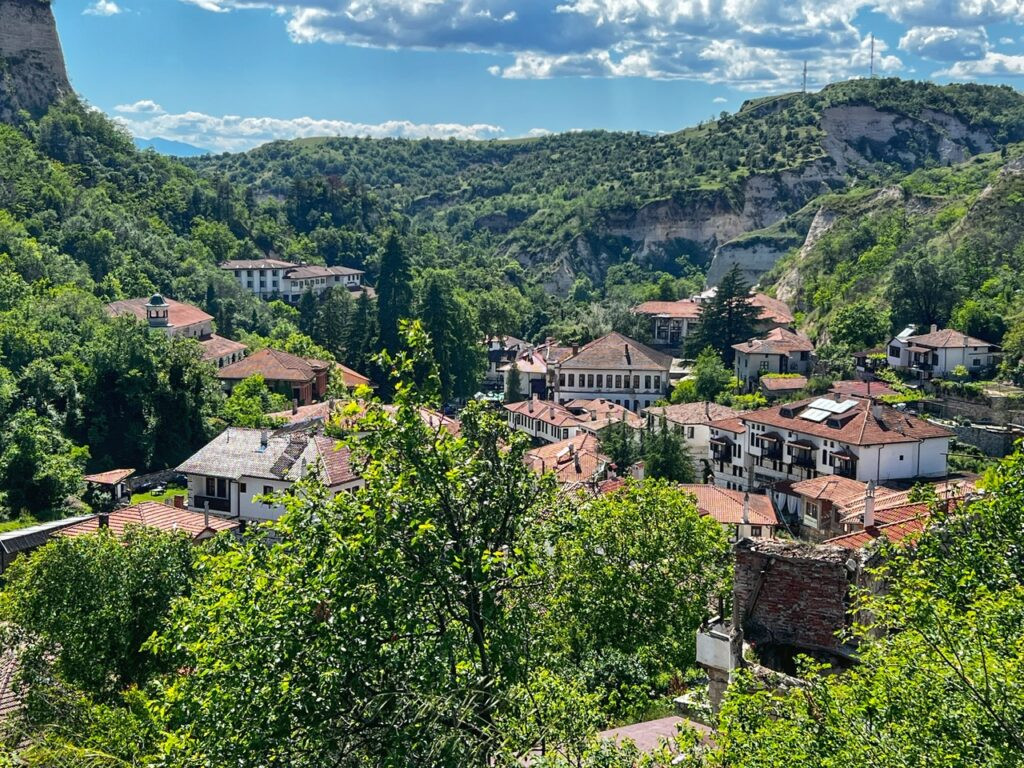

After a snooze, we headed back out into the idyllically springlike day to catch more views of Melnik, and on our first official hike in Bulgaria, which would take us through this enchanted stone arch and up to a small monastery called St Virgin Mary Spileotisa….
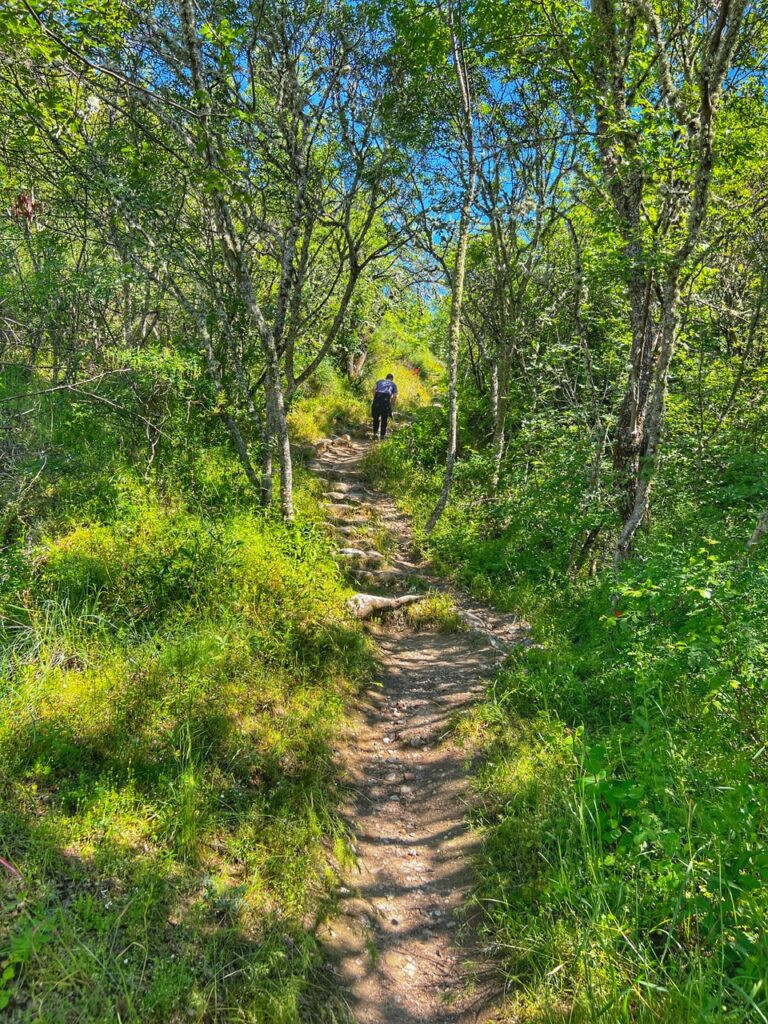
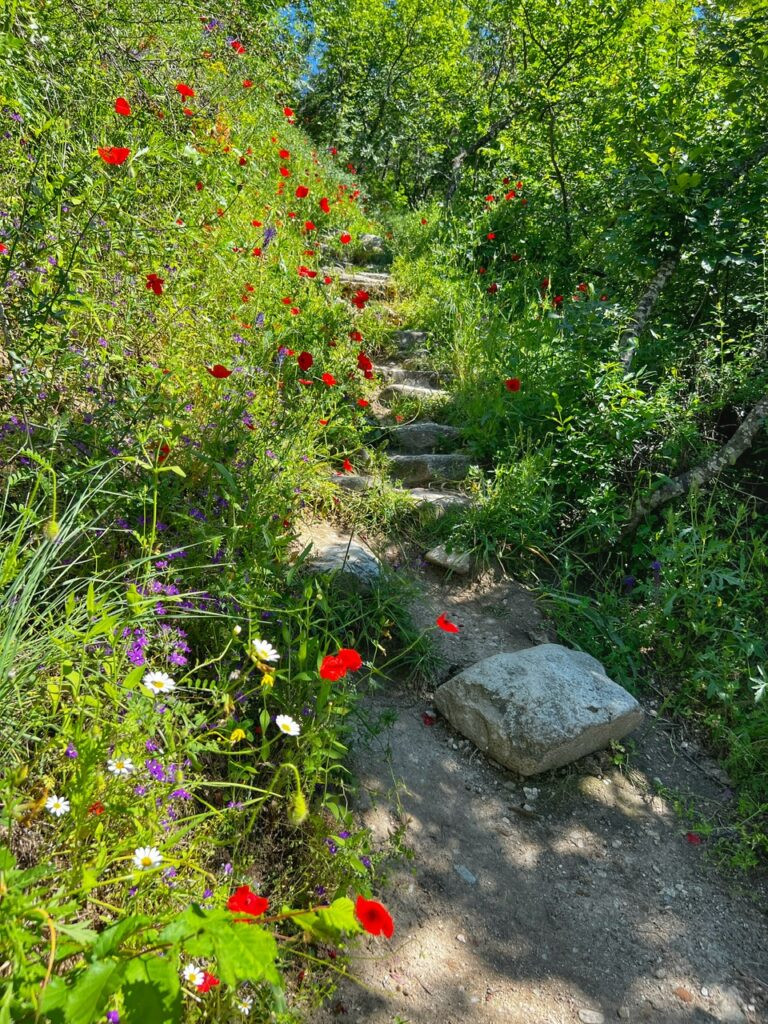
…via a steadily steep trail…where the carpets of wildflowers flooded the ground….

…and where the vistas got better and better.
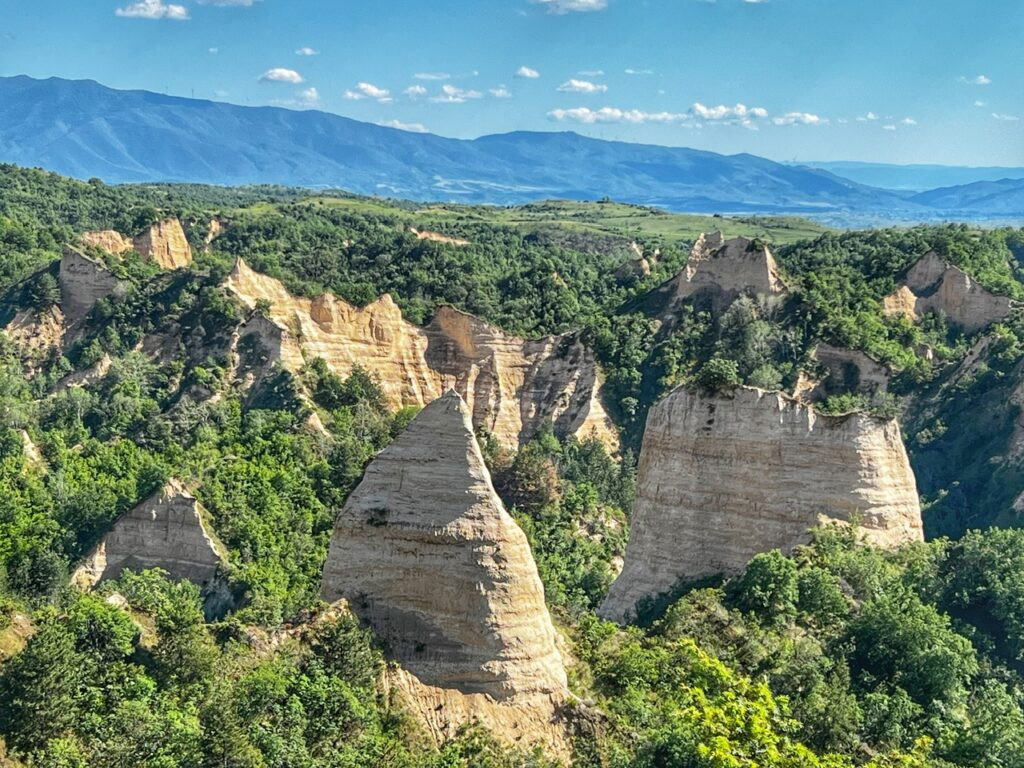
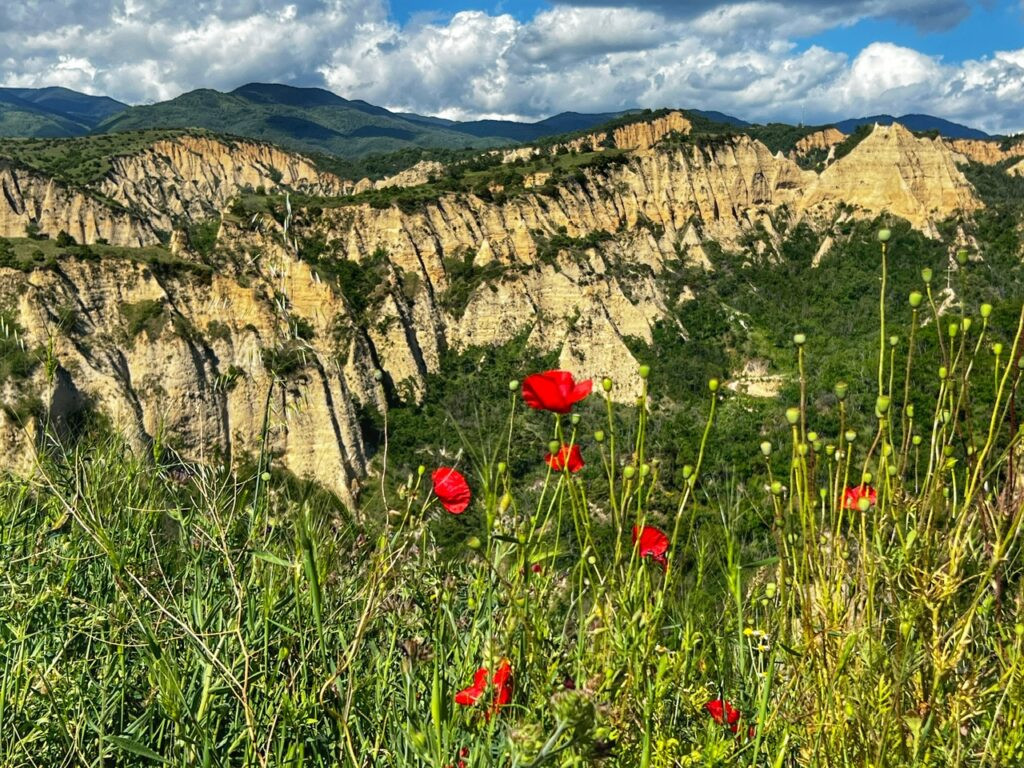
The 2.4k hike continued be quite worth the foot power because as soon as you get to the ridge, you are rewarded with your first spectacular views of the sandstone pyramids. These remarkable peaks are unlike any geological feature we’ve seen, but are a bit reminiscent of Pai Canyon in Thailand, the South Dakota Badlands and/or Turkiye’s Cappadocia.
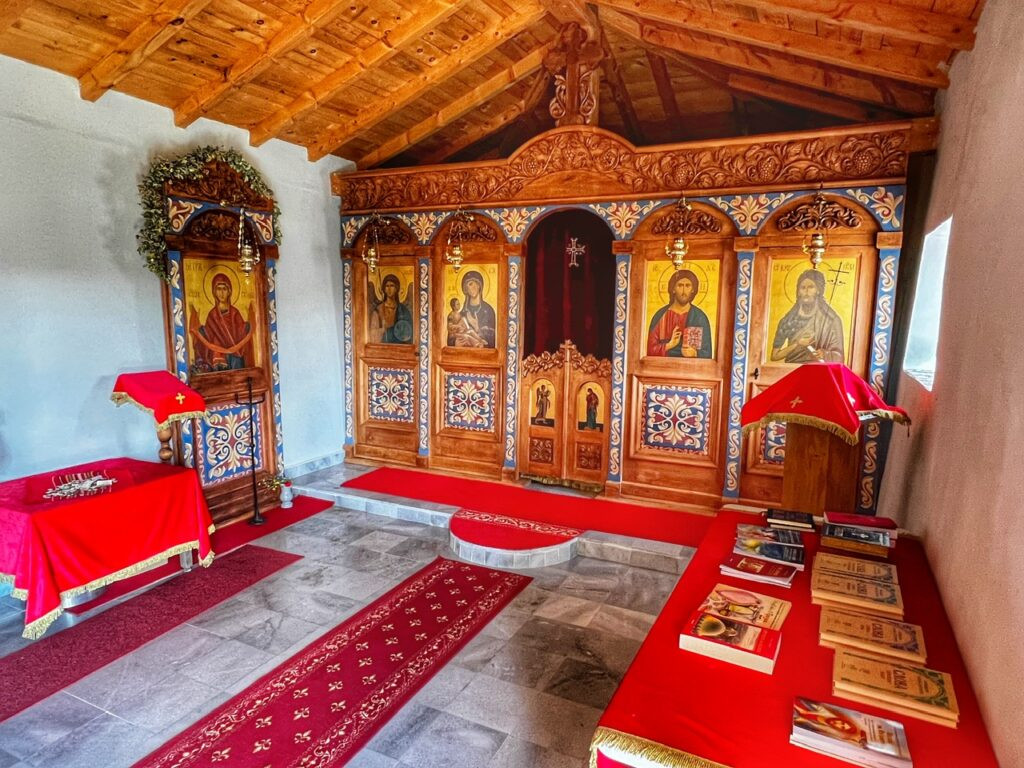
Inside the cherry red monastery on top.
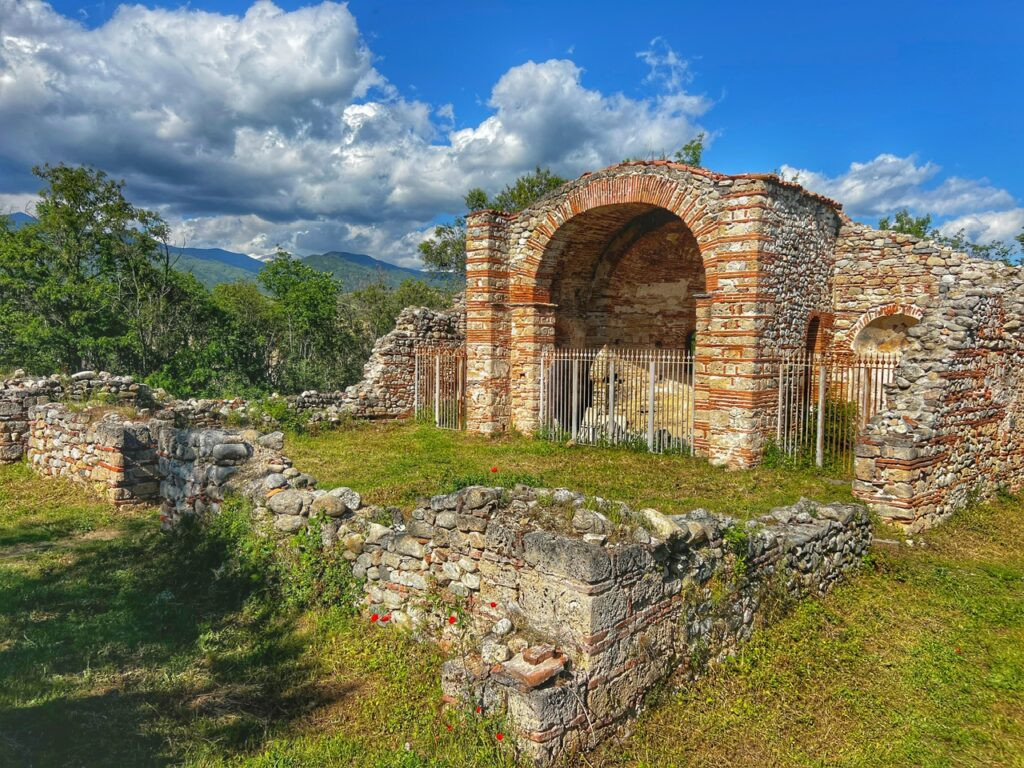
Continuing atop the ridgeline, we meandered upon the ruins of Saint Nicola church, which was the oldest and the biggest church in Melnik, at least until the beginning of the 13th Century. (Apparently, back then, the townspeople didn’t suffer enough with things like lack of electricity and toothbrushes, so they also had to truck up a mountain to go to church every Sunday.)
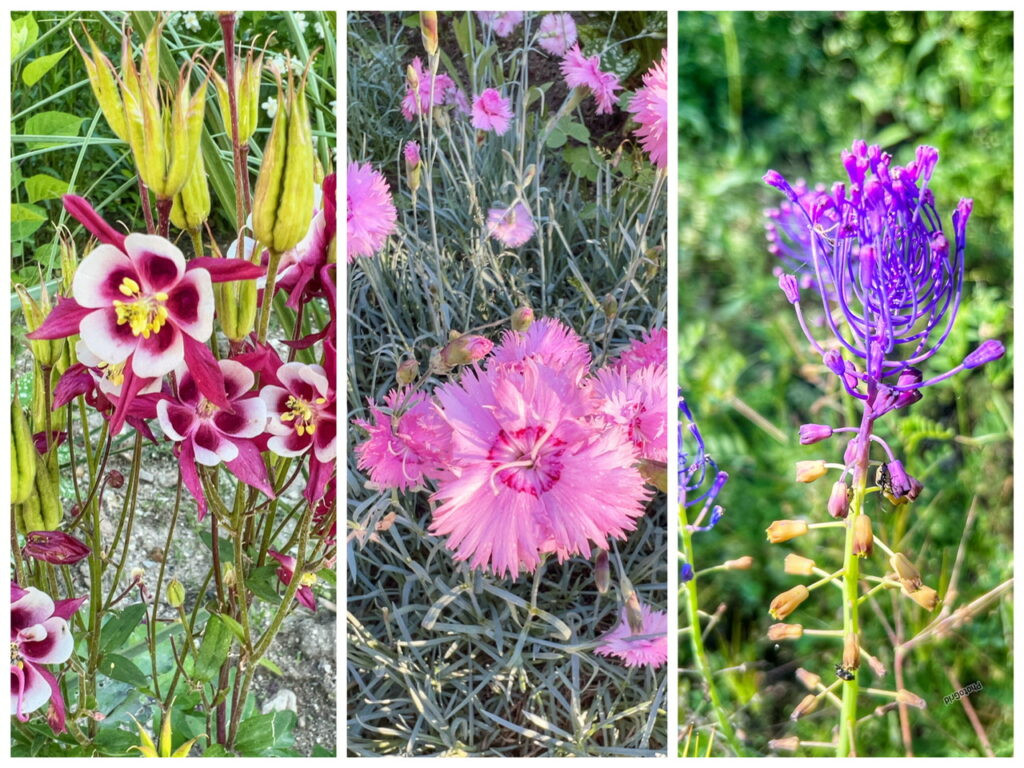
Along the way…so many gorgeous wildflowers!!

We then continued to the Despot Slav Fortress, a name you’ve now heard twice in this post. Mr. Slav was a powerful and independent Bulgarian noble in the early 13th Century who ruled Melnik, which reached one of its greatest heights under his control. On the soaring cliffs of the town, he plopped his bachelor pad down in the form of massive fortification where impressive 8-10 meter high ruins can be found today in an authentic, unrestored and tranquil atmosphere.
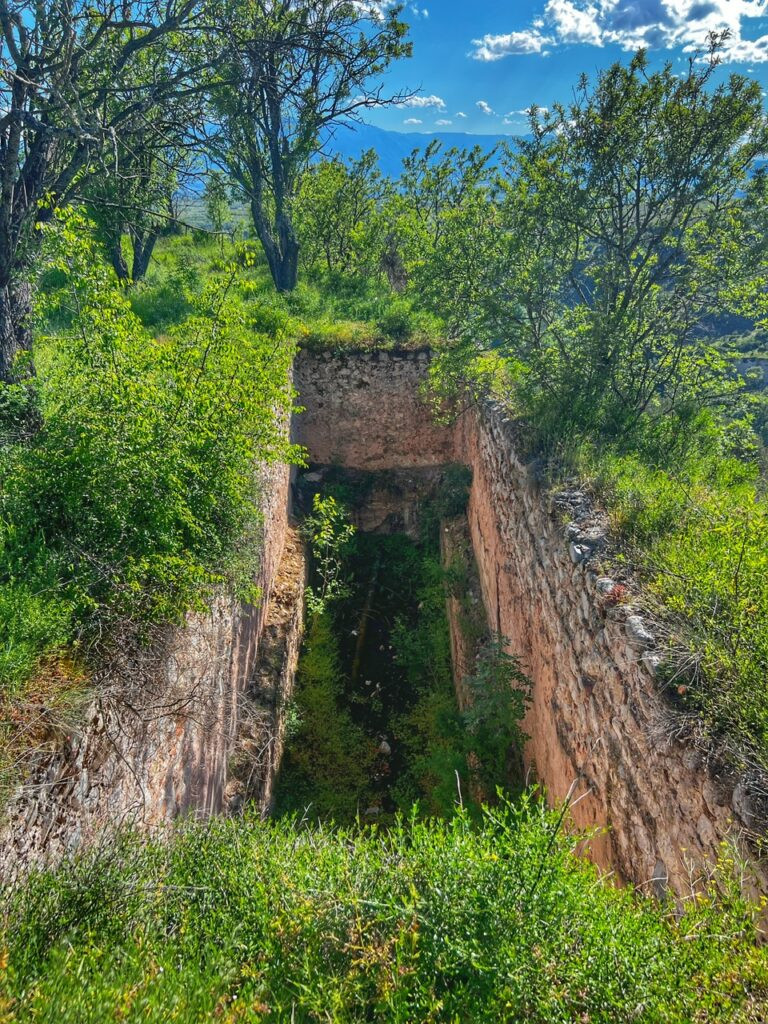
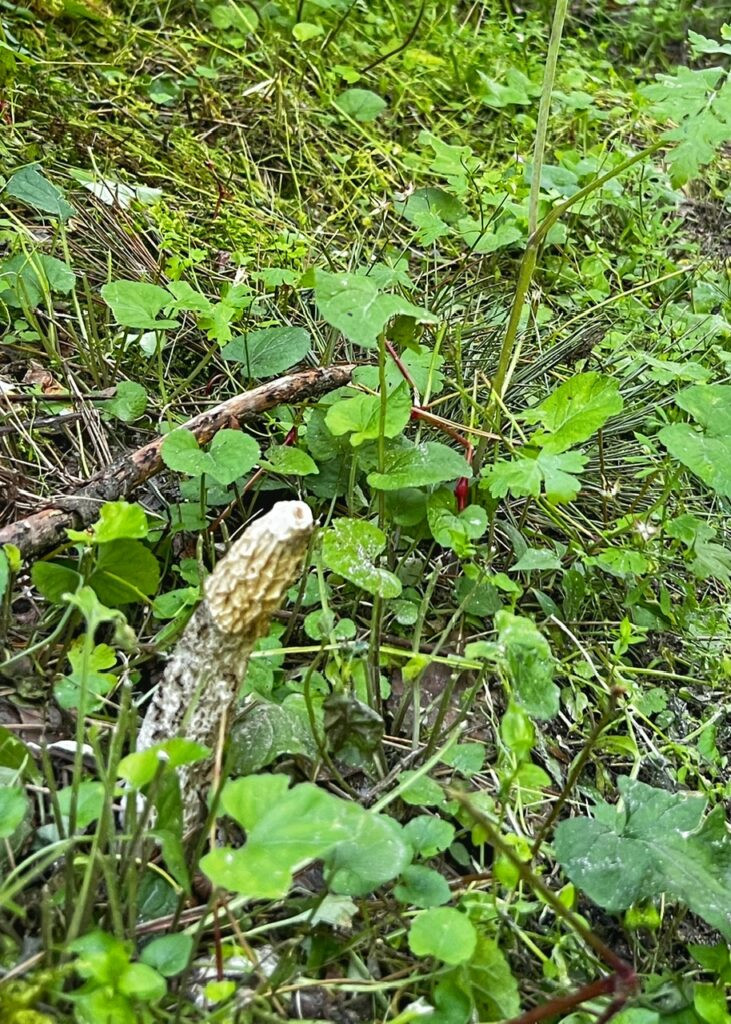
His man cave? Or more likely the remnants of a medieval cistern… Regardless, this fun-guy must have been happy to see me.

This real estate is seriously not too shabby.
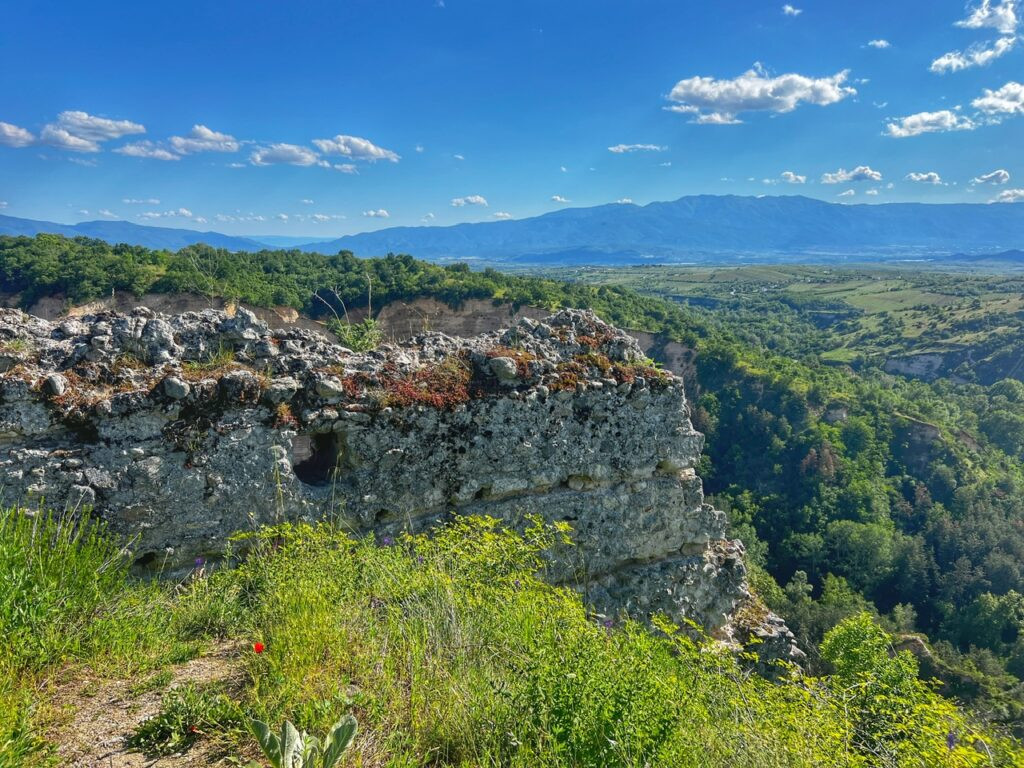
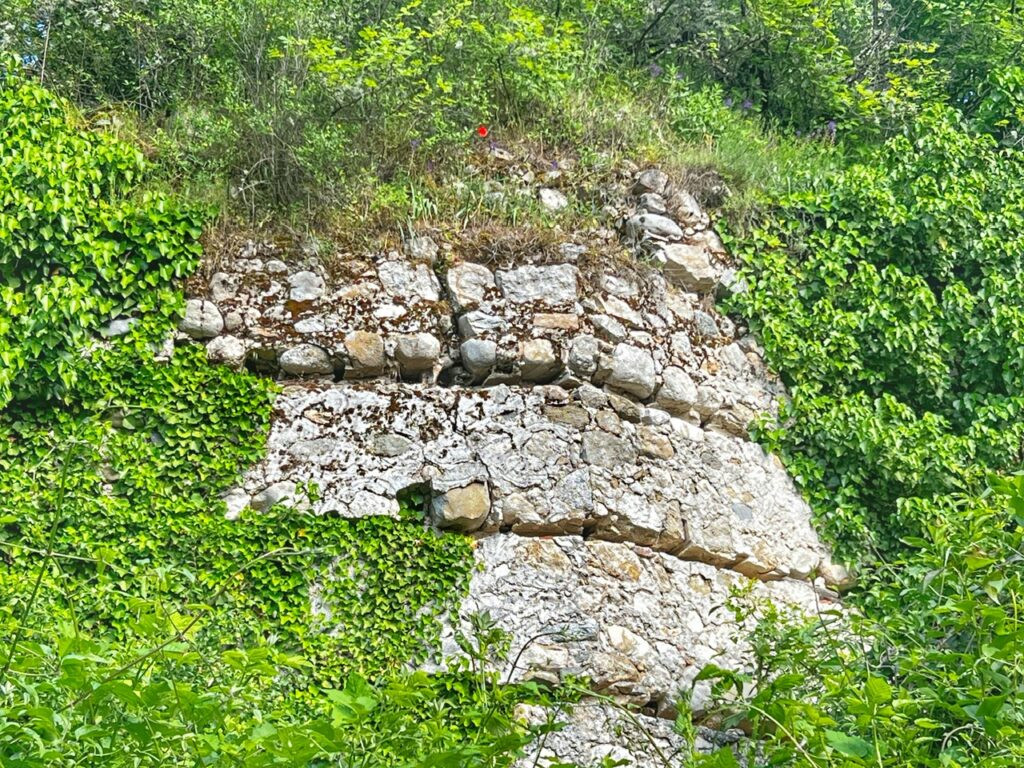
I’m sure the walls of our shopping malls will look like this in 800 years. If walls could talk…it’s amazing how you can see the holes where the floor boards once existed.

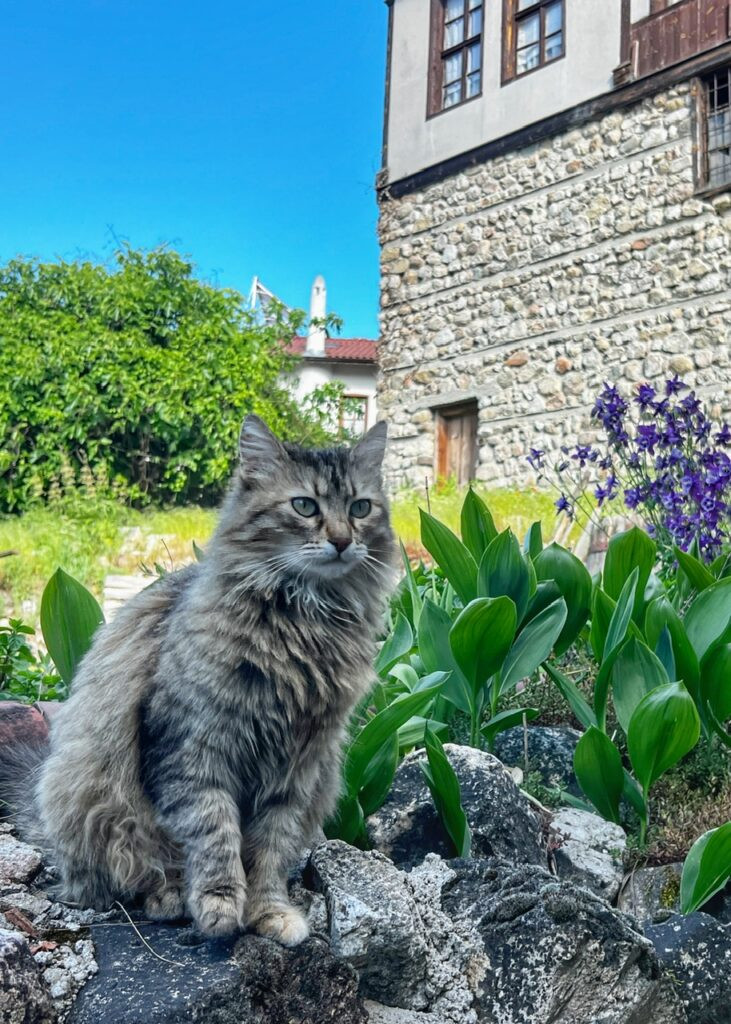
Reentering the town of Melnik from the forested trail we glimpsed quite a sight. And we also met this little cutie who approached us with no hesitation for a snuggle! And we didn’t even have our kibble with us!!
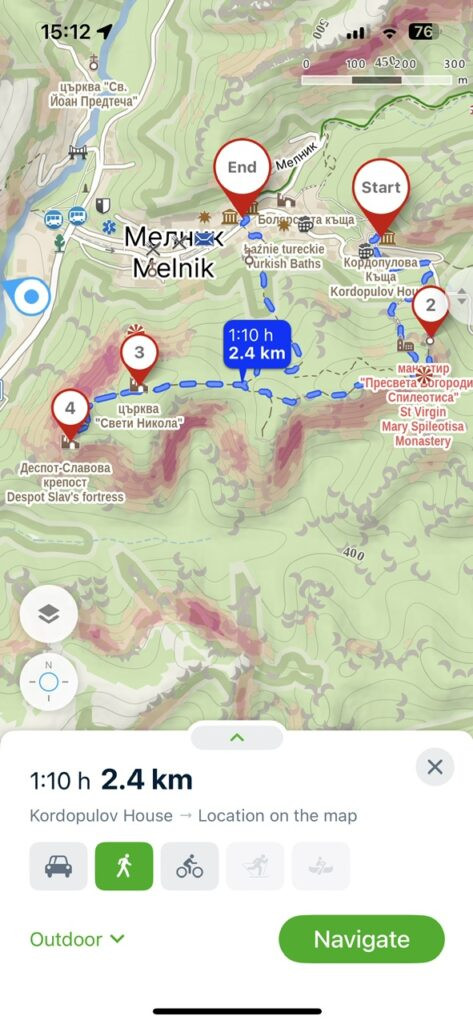
Our hike around Melnik.

For dinner, we ventured into the St. Barbara Tavern on the hill next to the Kordopoluv House, which we’ll tell you about below. This time, we only had a tomato salad, bean soup, and breaded cheese alongside another couple of very healthy pours of vino to send us into sleepy town, which totaled about $19. By the way, the wine in Melnik is well worth stepping into Lush Land over. In fact, during the lead up to and duration of World War II, Winston Churchill supposedly ordered 500 liters of Bulgaria’s Melnik wine every year. So, if that was his choice alcohol to make it through some seriously tough times…you know it’s good.

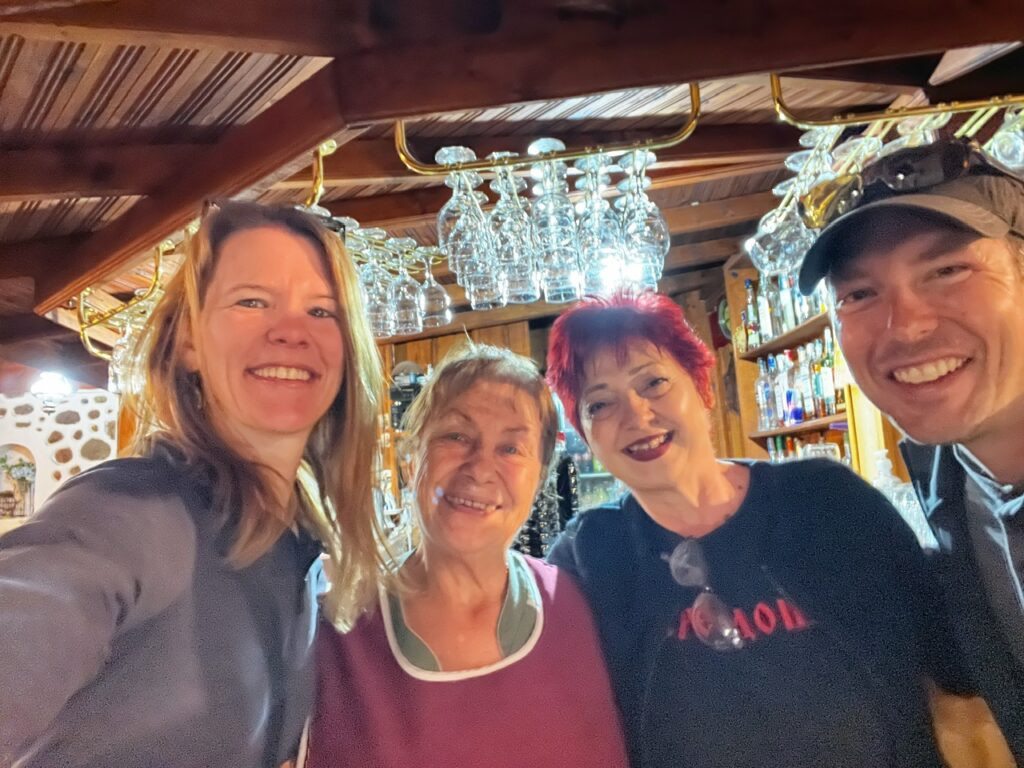
Our included breakfast the next morning was the perfect way to kick start a big hike. After, we said dovizdane to the staff. By the way, in Bulgaria, (actually all of the Balkans), it seems pretty much mandatory to have aggressively bright colored locks if you’re over 60 and wanna be hip. It’s kinda adorable.
The 1754 Kordopulov House
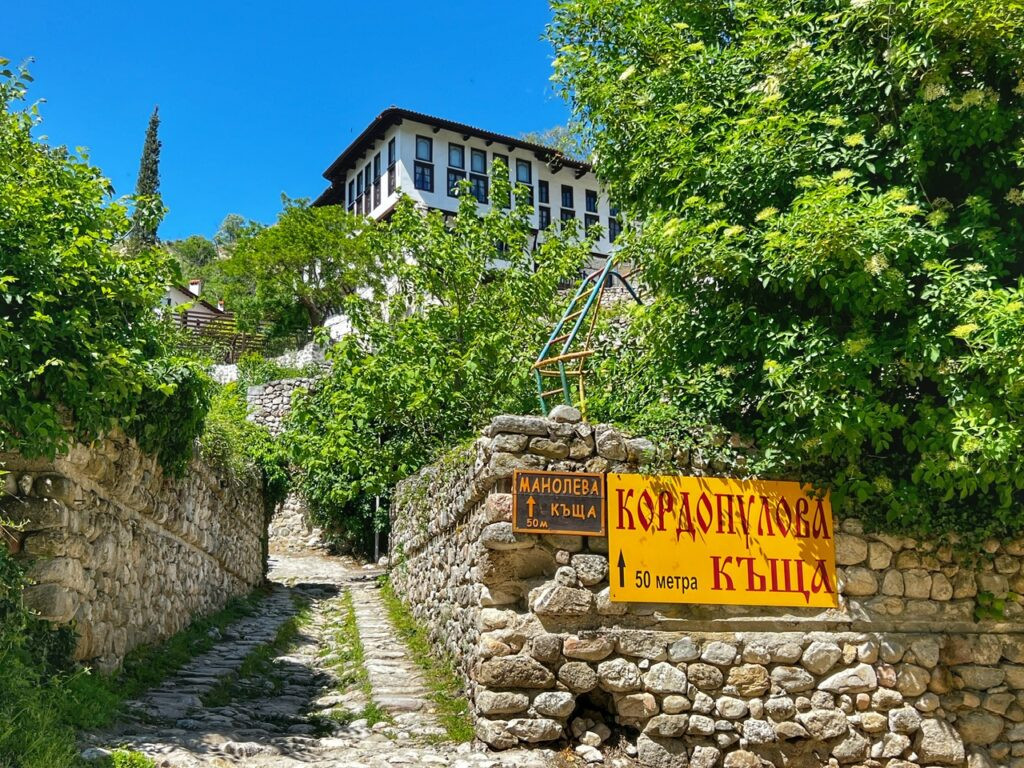
Wanna know how the 1% lived in 18th Century Bulgaria? Look no further than Melnik’s immaculate Kordopulov House built in 1754, which is recognized as one of the greatest and largest buildings of the Bulgarian national revival revolutionary style and the largest in the whole Balkan region.
The bottom layer starts with a series of wine cellar tunnels capable of holding up to 300 tons of the good stuff. Additional layers hold keys to the past including a blend of Bulgarian styles, alongside Venetian and Oriental sparkling stained glass windows, and even a minaret inspired fireplace. It was undeniably a place for the hoity toity to congregate…in this case, the famous Melnik Kordopulov Family, who were trading with wine across Europe, including Venice. And, naturally, the mansion is perched on a steep and narrow driveway at the edge of Melnik.
In short, the $3/ticket is very well worth it for this little slice of architectural awe.
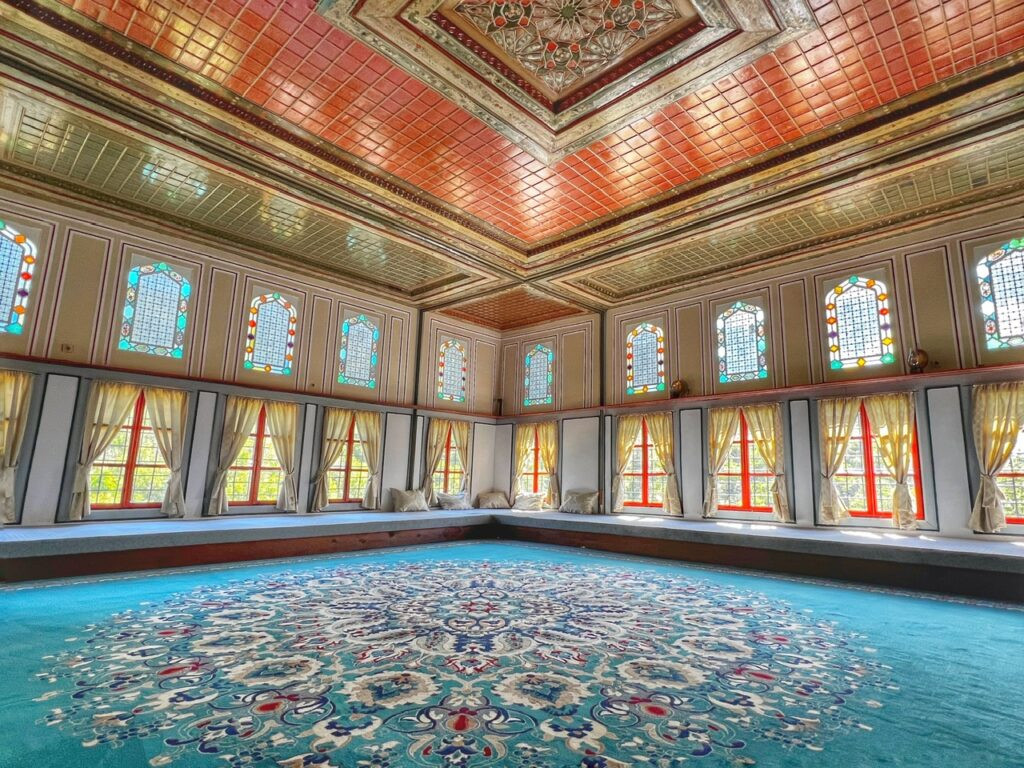

The top level is crowned by windows laden with colorful glass through which at least one window is exposed to sunlight for every hour of the day. It’s some of the most eye-catching non-religious stained glass we’ve seen in years.
This 90-square meter splendor was called “the guest room,” which is a perfect indication of how hospitality works in this part of the world. The wall even bears the message that “Travelers, from every corner of the world, welcome to the Kordupulov house.” We’ll take this room for a month, please!! The upper stained glass windows are a mix between Venetian and oriental style, while the lower row is typically Bulgarian. The room is exposed to the sun from every direction – east, west, north and south.


In the main bedroom, the stained glass were done in several different styles and the fireplace has the contours of a minaret, on top of which there is an orthodox cross, conveying that the different ethnicities that lived in the region, lived well together…or, at least that this guy was a progressive thinker.
The first level, encompassed by droolworthy stone for cooling and high wooden beams, is the place where the wine was made.
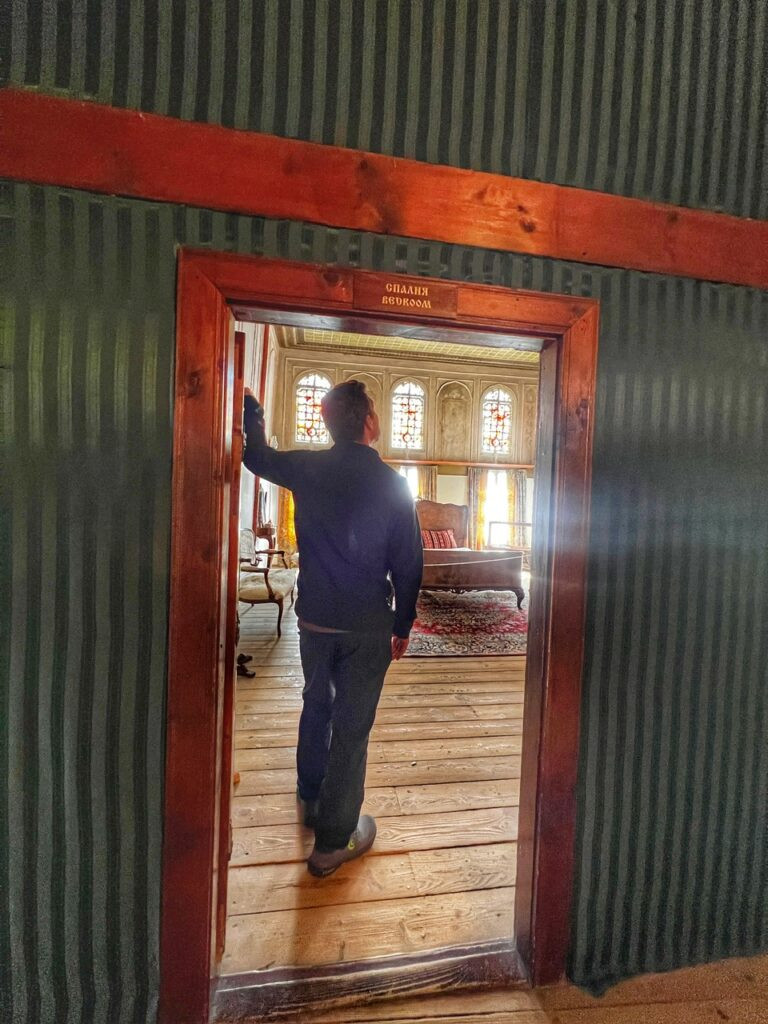
Greg, average at 5.8, fits perfectly through the small doorways as he draws inspiration from the bedroom. It didn’t seem to matter where you were from, people were shorter back then..
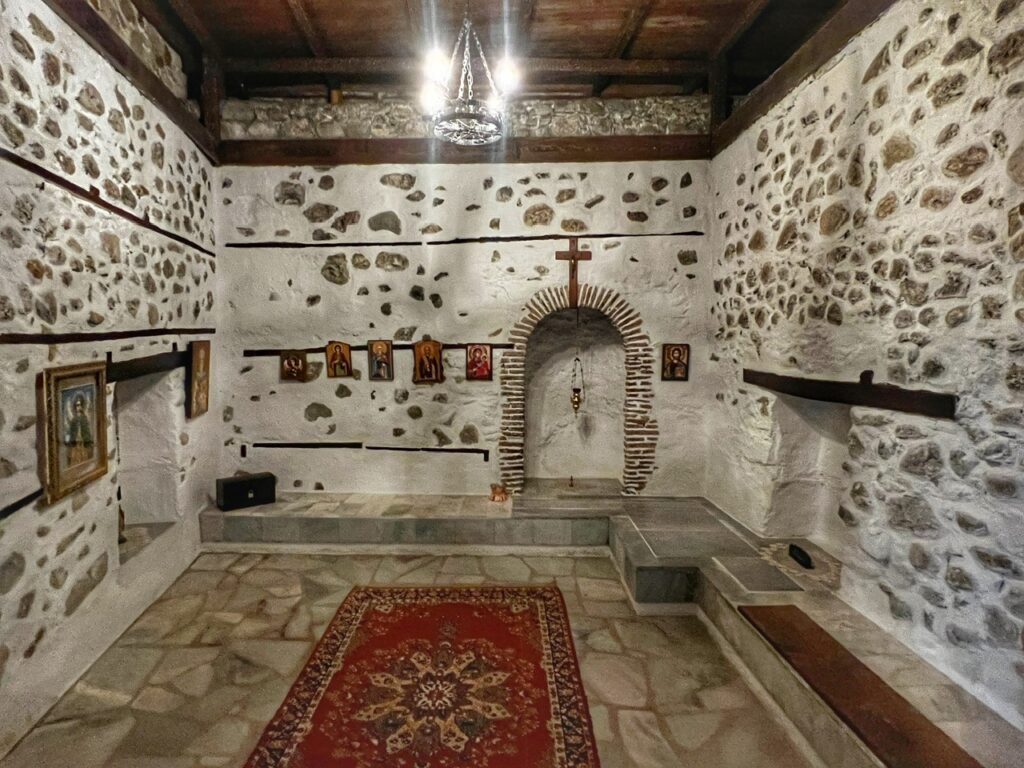
The zen den, aka prayer room.
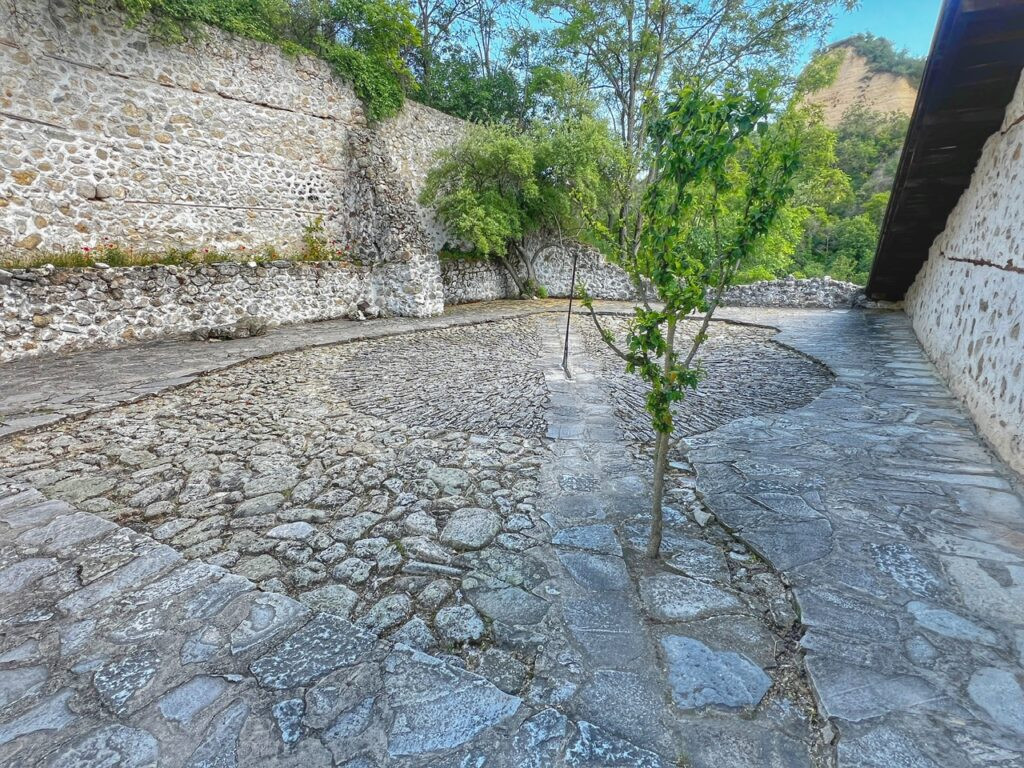
A precipitous and awkward inner stairway leads way to the summer terrace, where you probably wanna refrain from having too many glasses of the aforementioned wine. Here, a sun clock lies within a stone “map” of revolutionary Bulgaria. According to the plaque, it is “incredibly accurate” and at one of the map’s corners there is a tree, which marks Melnik’s location. We think this design must have been a fabrication of too many shots of rakia. Hehe.

The dining room is where breakfasts, lunches, dinners and trade negotiations took place.

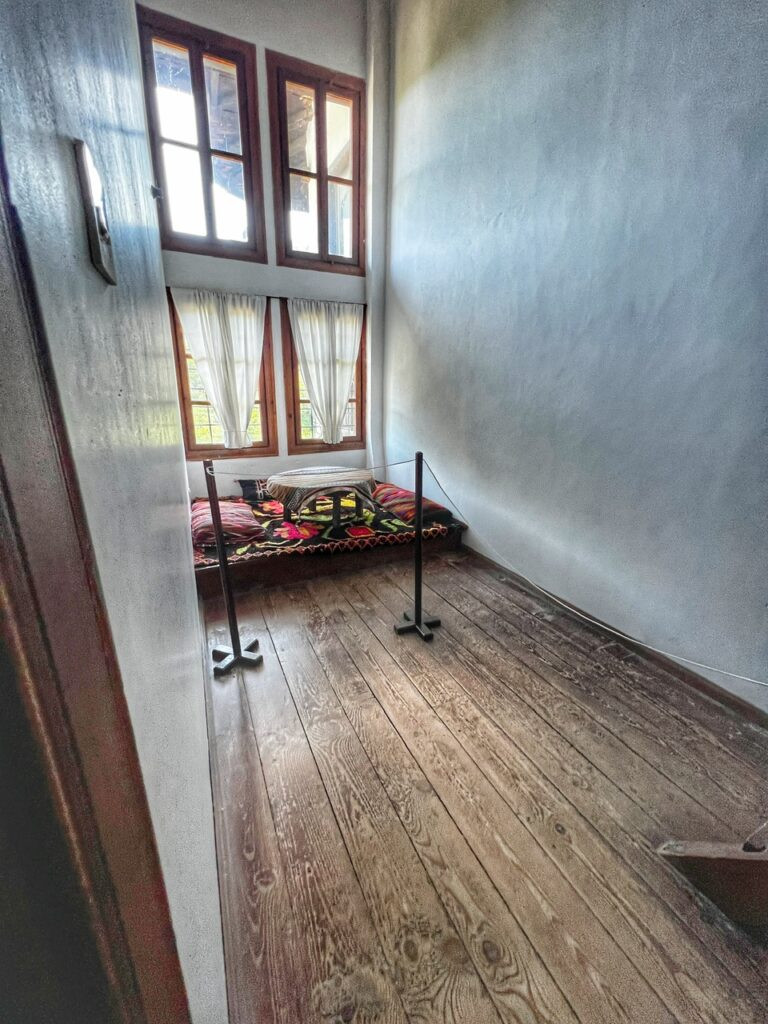
It contains a sauna, where naked male-bonding-style negotiations probably happened…
And even a secret “cupboard” off to the side of the room, which any good Nancy Drew could pop open to reveal to find another room…a room where someone could eavesdrop on deals, judging whether it was good, as only two people were formally allowed on such occasions. If the deal was acceptable, they would go to the guest room and finish the documents. The vigilante protector of the town was Yane Sandanski, who often spent nights in the house. When his people were in danger, they would hide in the concealed room. How hidden can it be when it has a window to the outside, however? Hmmm….?
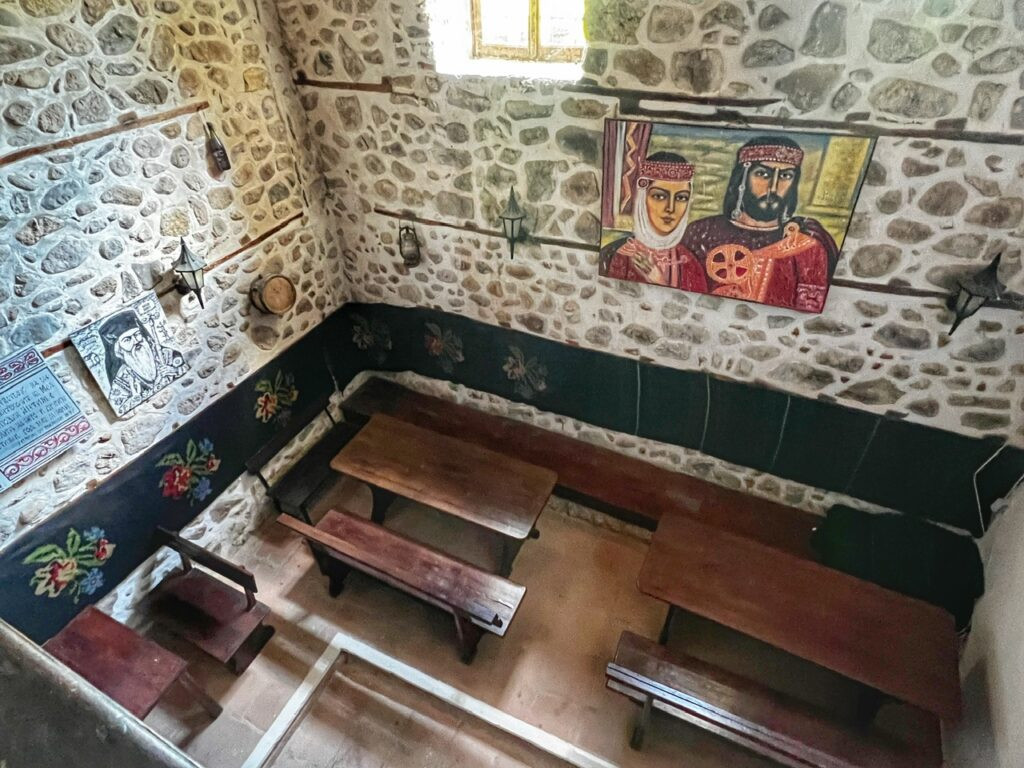
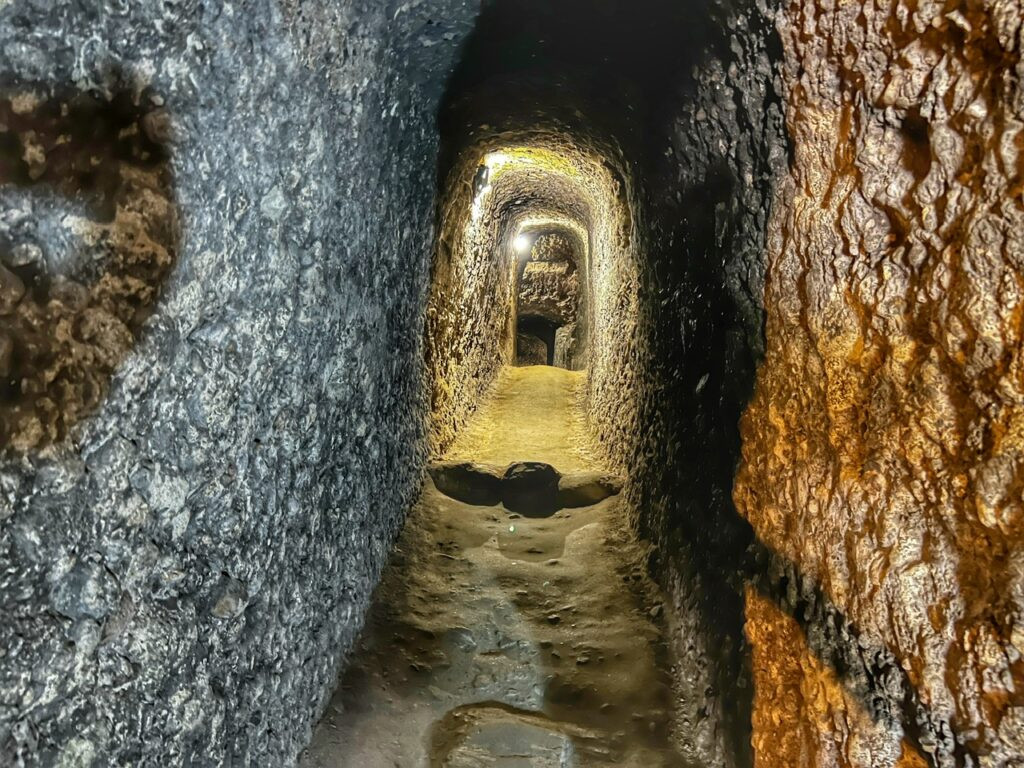
Heading into the lower level of the house, with a fine family photo, which is where they now do wine tastings. Now this is a fun basement!!! The 200 meters of tunnels were dug for 12 years and are a natural refrigerator with temperatures between 7 and 9 degrees. The size of the vats were up to 50 tons, but through the years, they fell apart.
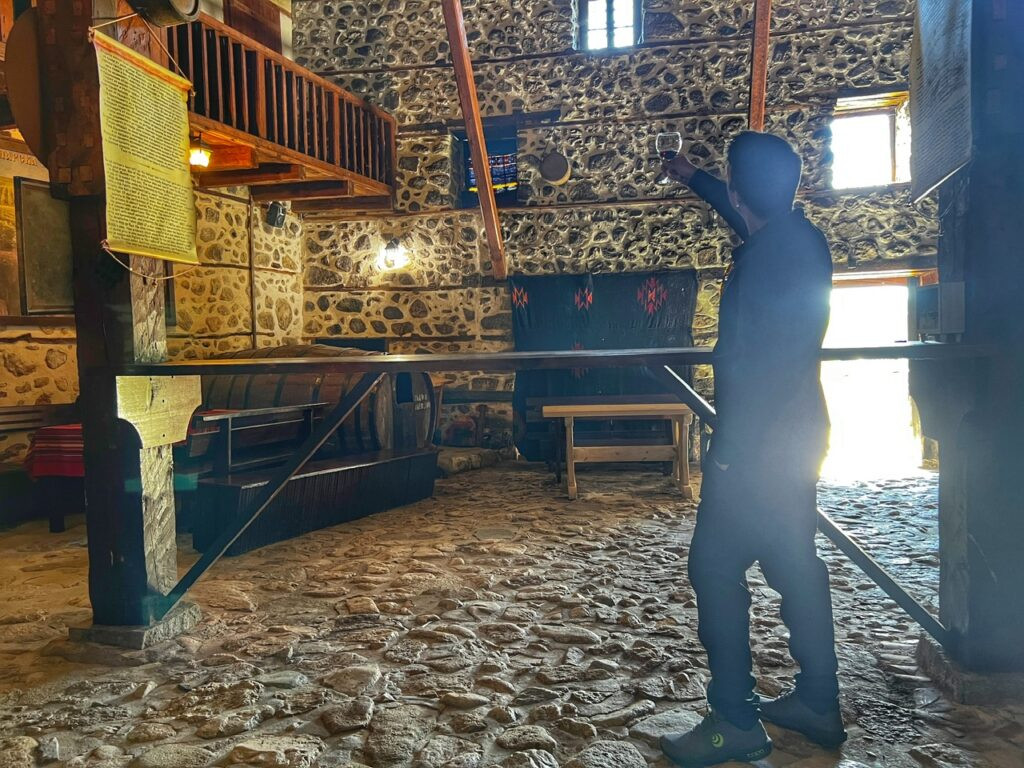
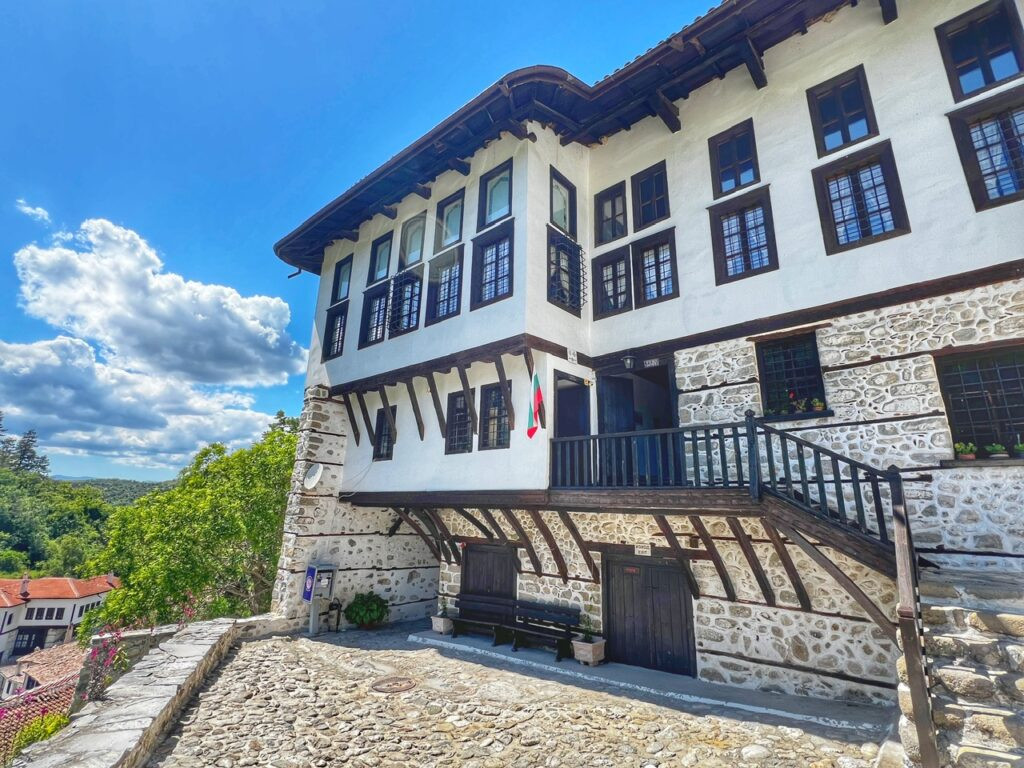
After the tour, we were granted with a wine tasting. Naturally ours was aged about 4 to 10 years and not dated 1754. The guy that served us the wine didn’t seem to speak any English so we didn’t get any descriptors, but the delightful red we were given had hints of cherry, black pepper, and a bit of tobacco. It was pleasant to experience the process of Melnik’s wines which rivals wines from all over the world and sells at double price in wine markets in Western Europe. In the old days, Melnik’s wine was an inseparable fixture on the tables of Bulgarian khans, Venetian doges, French dukes, Austrian counts, and English lords. It was also the fixture on Winston Churchhill’s dinner table leading up and through World War II. That’s quite a resumé…
Another curious fact we learned was that the murder of Manol Kordopolov, one of the family’s heirs in 1912, during the Balkan War, was followed by the assassinations of 30 more people from this area. Shortly after, Melnik was torched.

Not exactly the warm and cozy feelings exuded from Melink today…
Hiking from Melnik to Rozhen Monastery
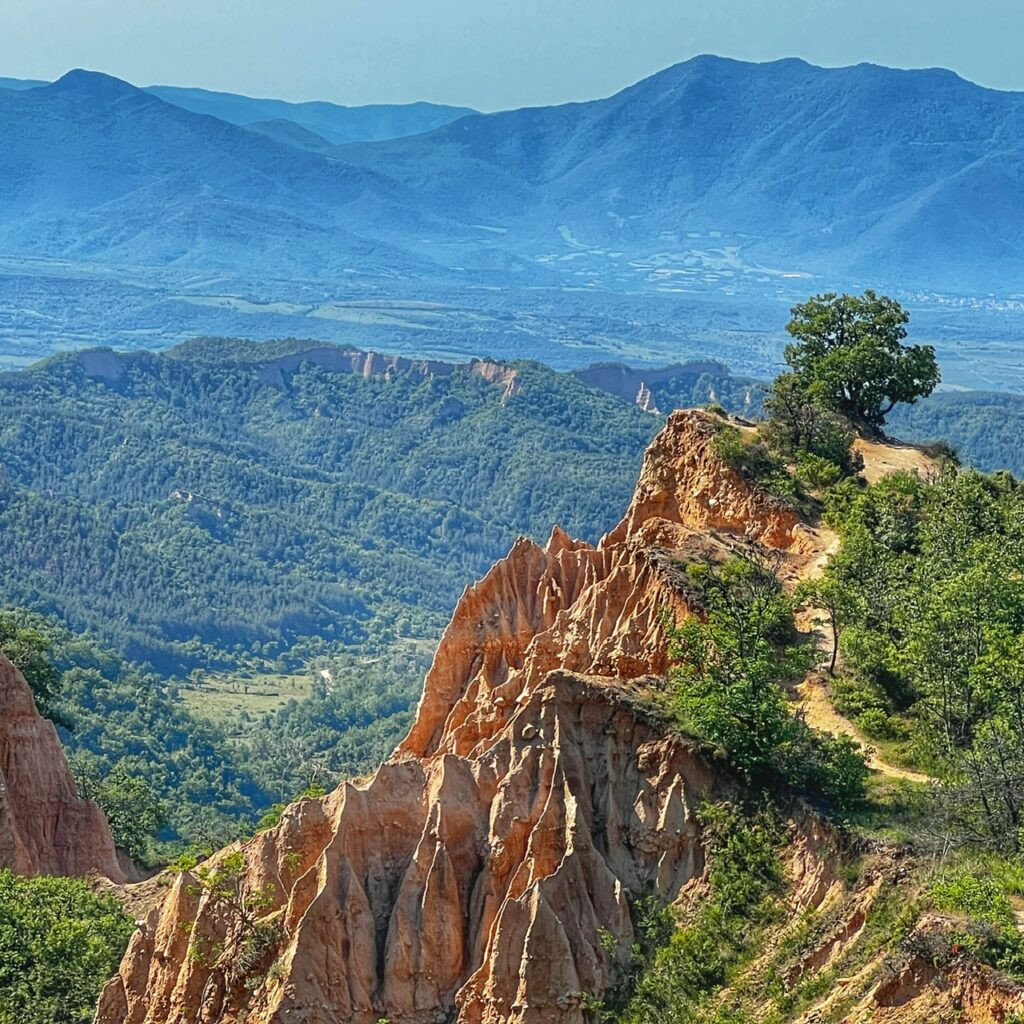
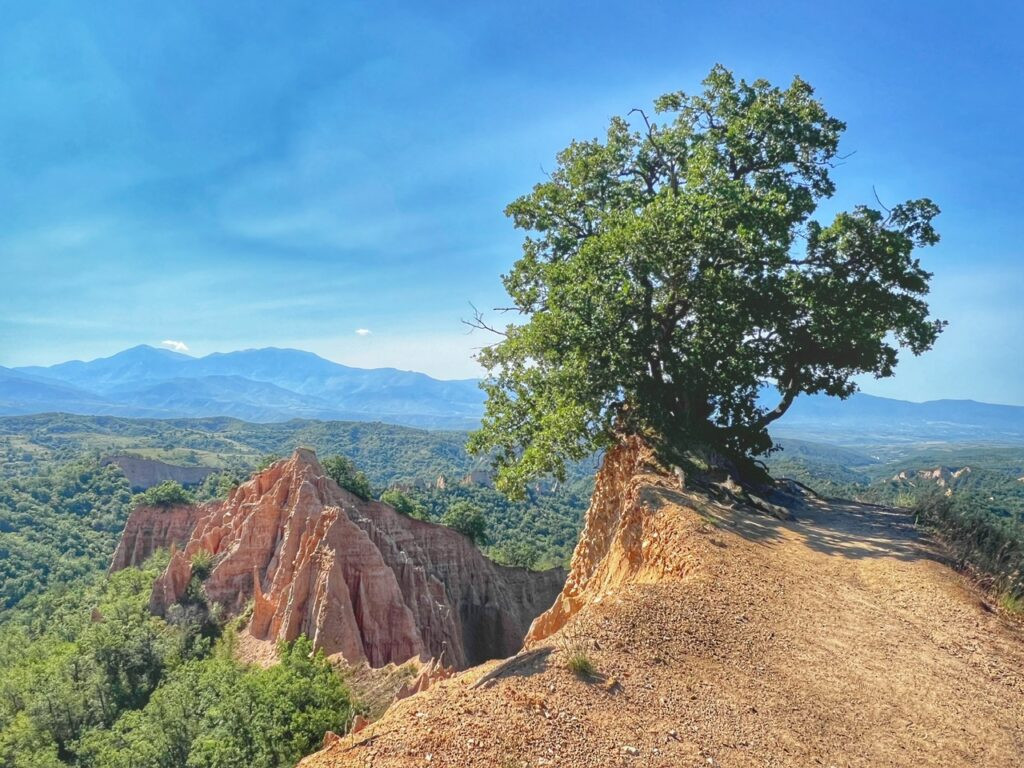
Although we treasure the village of Melnik itself, the thing that made this visit even more fantastic than the last was the opportunity to hike from Melnik to the village of Rozhen. Along the way, we were enamored by ruins, enchanting forest and being amongst a remarkable sea of mystical and ever-evolving sandstone pyramids. The hike, took us about 2.5 hours going at a leisurely pace for 4.6 kilometers along a very well marked trail. In Rozhen, we visited a medieval monastery, had an authentic Bulgarian lunch, and also a unique tunnel carved into the mountain before returning on the afternoon mini bus back to Sandanski.
As we alluded to in the post on Melnik, the sandstone pyramids are a fascinating natural wonder, which blend our experiences in Cappadocia, Pai Canyon and many of the national parks in the USA. These hoodoos, as they are called, are situated at the hills of the Pirin Mountains and span an area of approximately 17 square kilometers.
They were all beautiful, but at one point on the trail, you could veer off to a view point on the right to meet this spectacular tree sitting in solitude on an otherwise barren peninsula. It’s as though she is contemplating the meaning of life as she peers over the edge at the surrounding mountains and other sandstone drippings below.
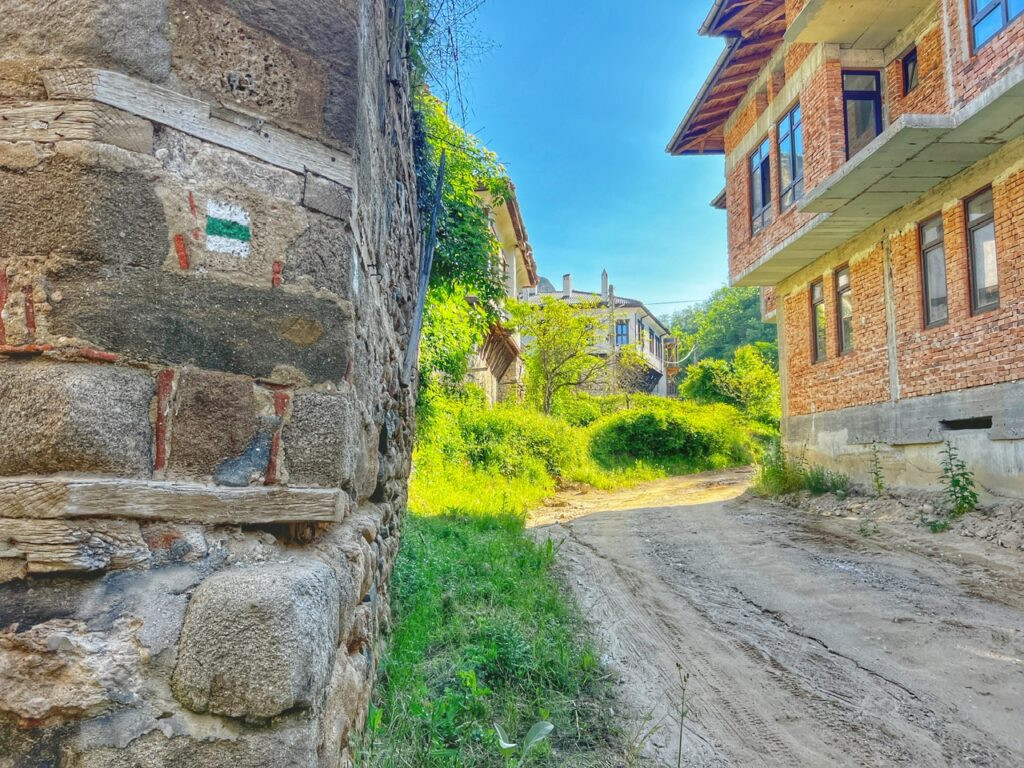

Moving backwards, we take you to the beginning of the trail, in Melnik, which from its outset is conveniently marked by the little green and white flags the whole way through. Oh my goodness….how we’ve missed hiking in Europe.
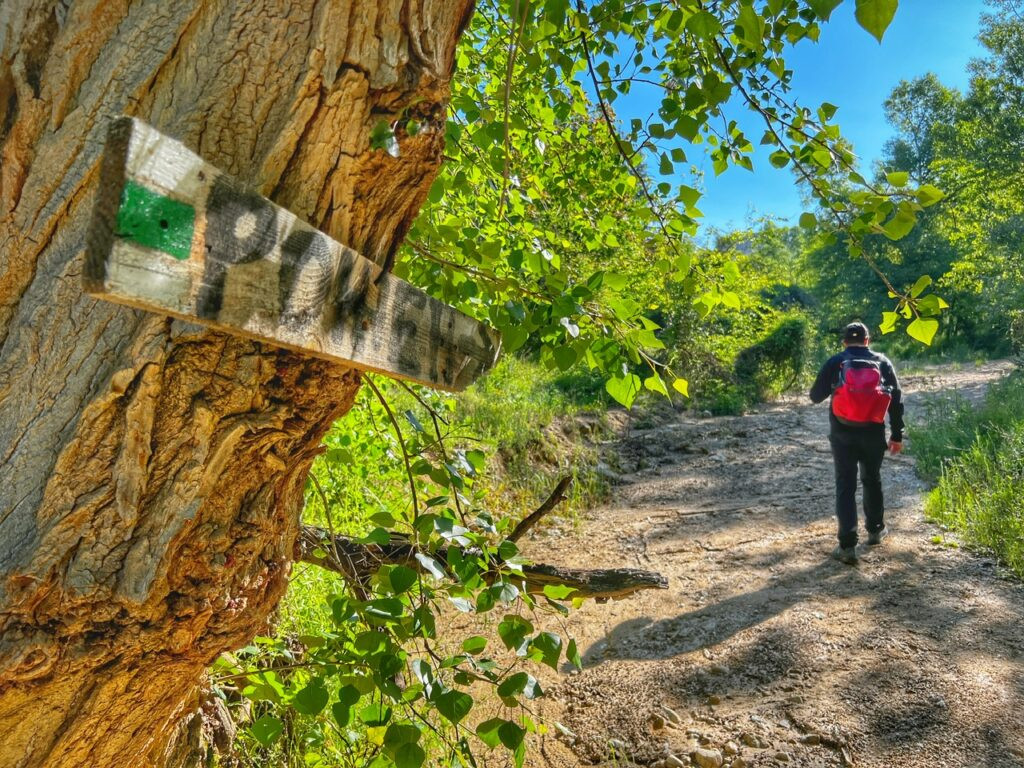
There is nowhere in the world that compares. And the weather was SO perfect!
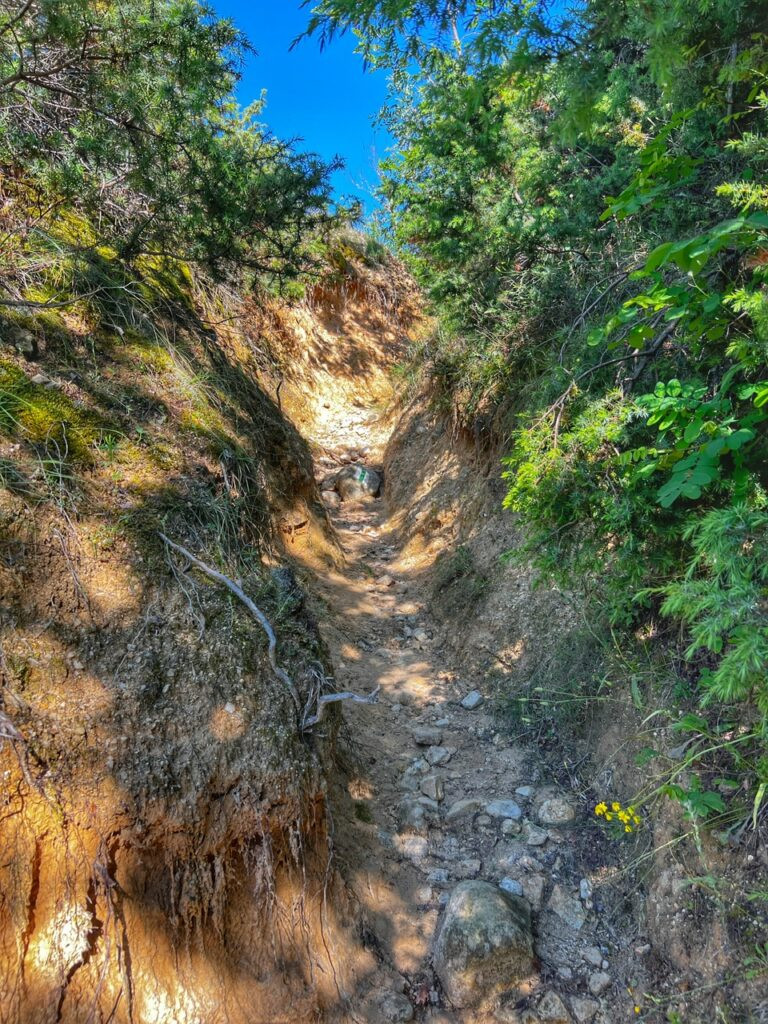
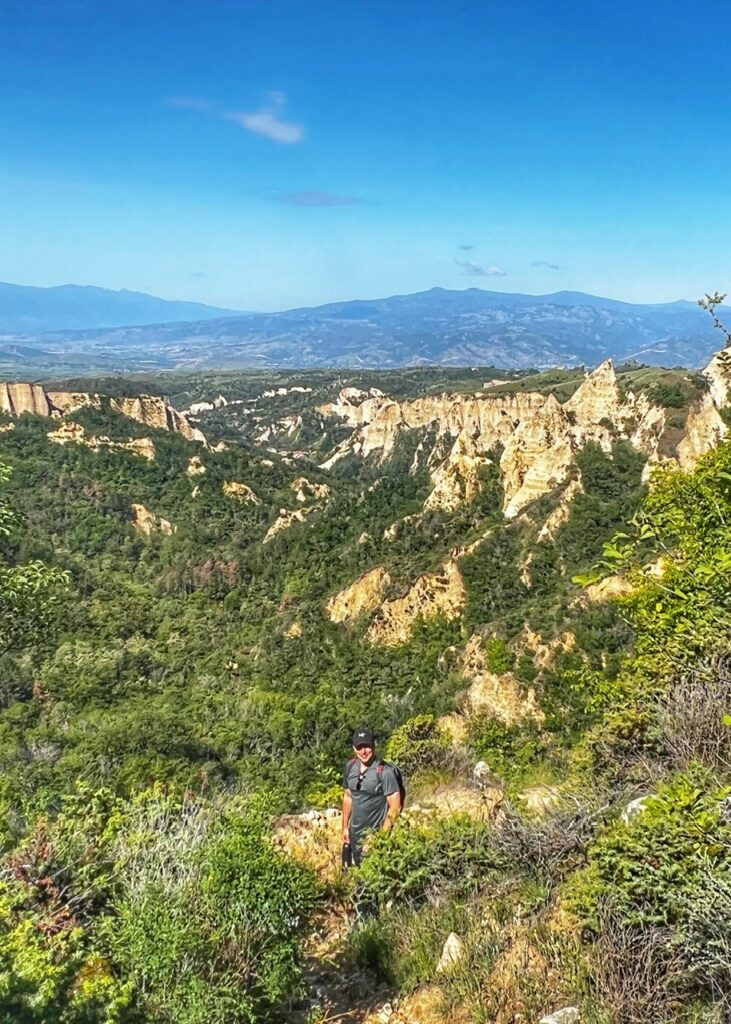
We had our Mapy app, but we really didn’t even need it. Most of the trail follows an old river bed, but several times it led off the course to avoid some unnecessary obstacles. The first part of the trail is reasonably flat through the forest, before it heads up to allow some delicious views of what surrounded us.
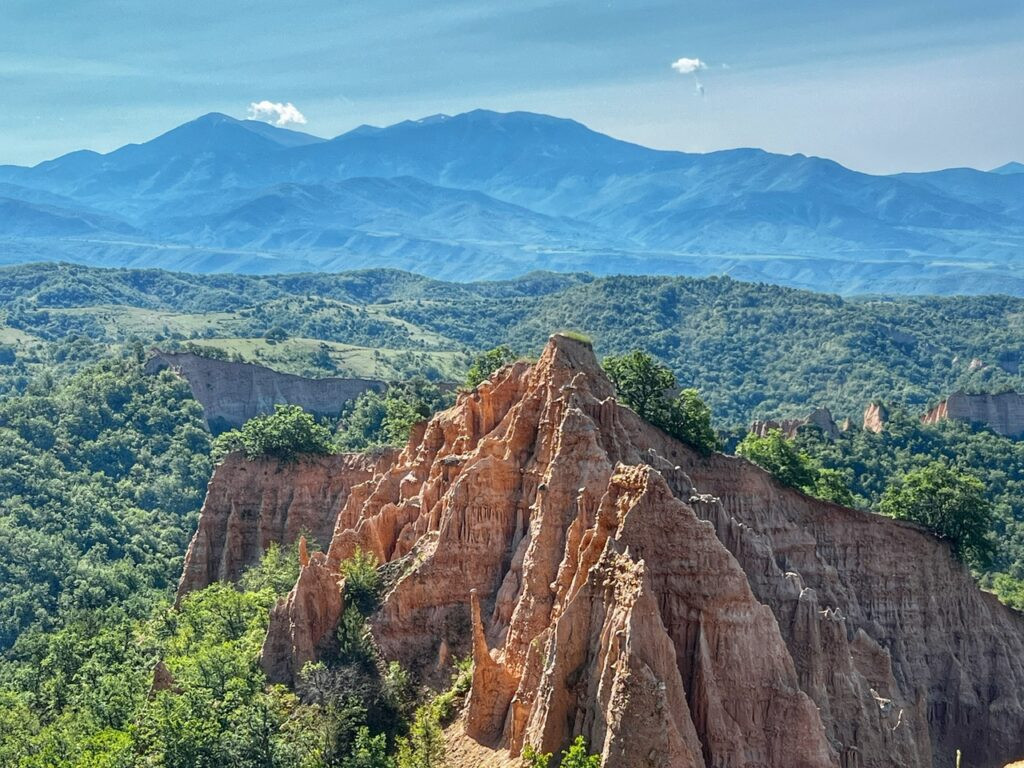
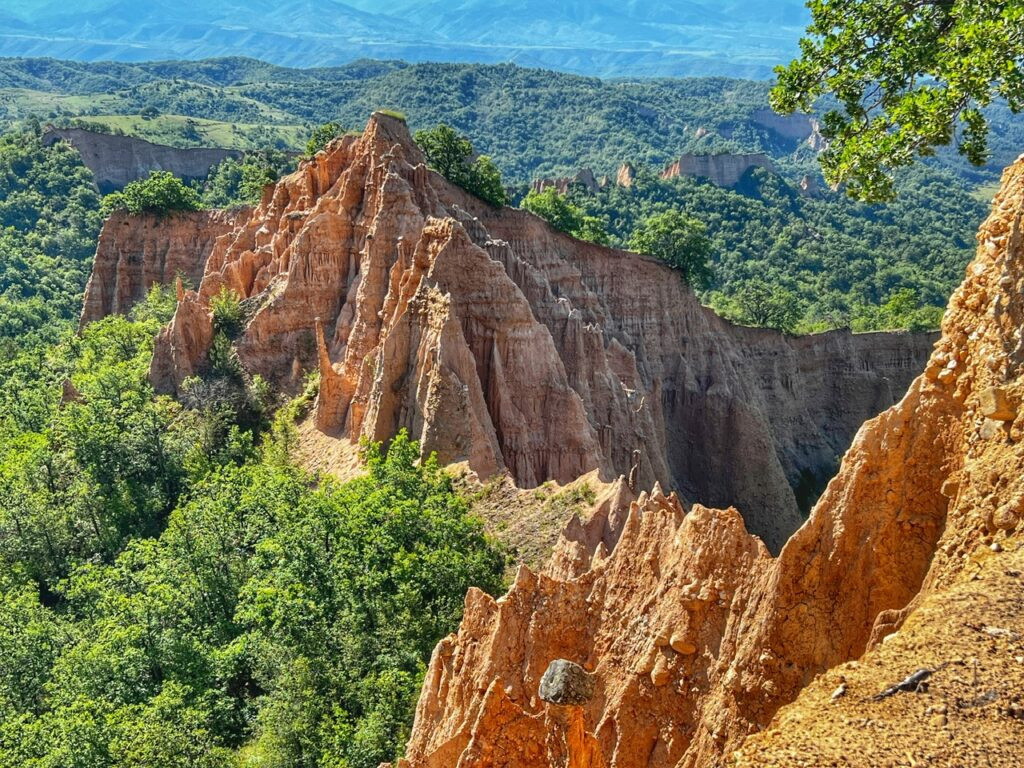
Now this is some extraordinary work, Mother Earth. Over the millions of years, natural erosion process have sculpted them into various shapes resembling not only pyramids, but also cones, towers, mushrooms, needles, obelisks and whatever else your brain can imagine. Including some real feats of earthgineering…
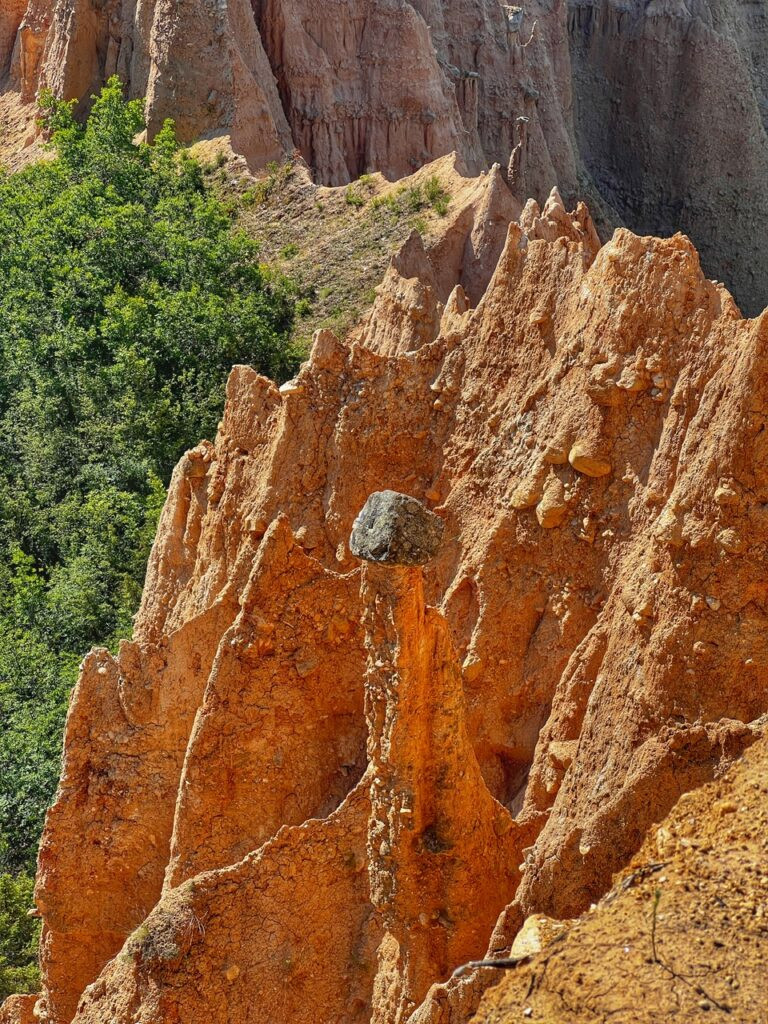
…like this rock balancing action, called a “sand chimney” which add to their distinctive appearance.
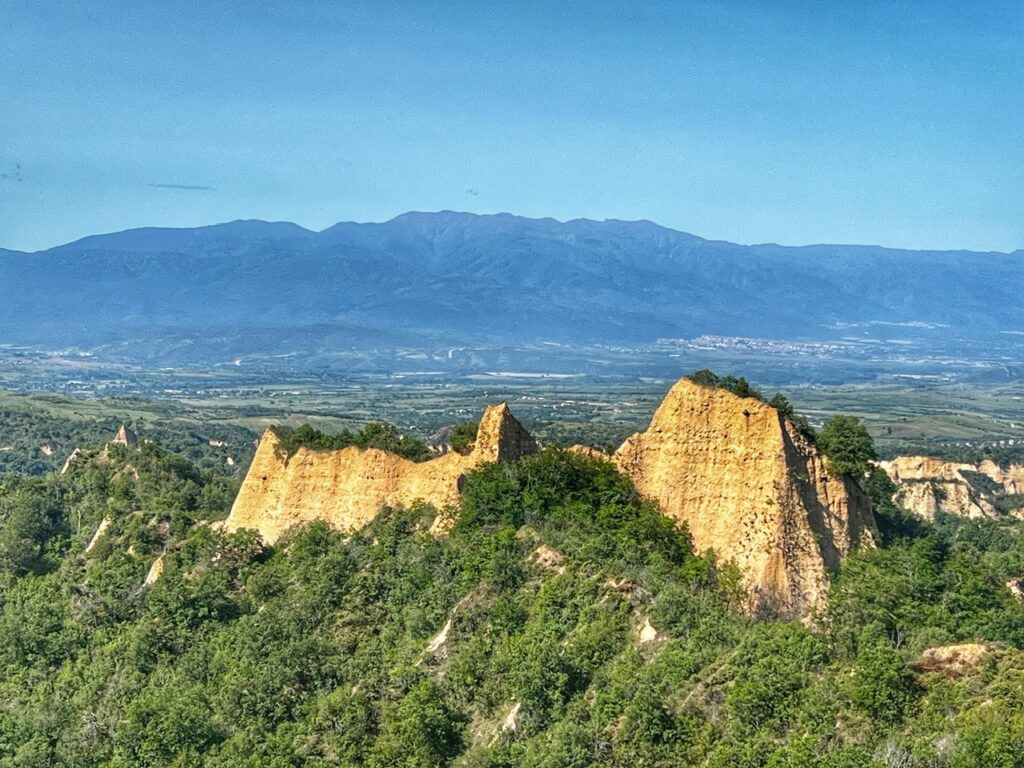
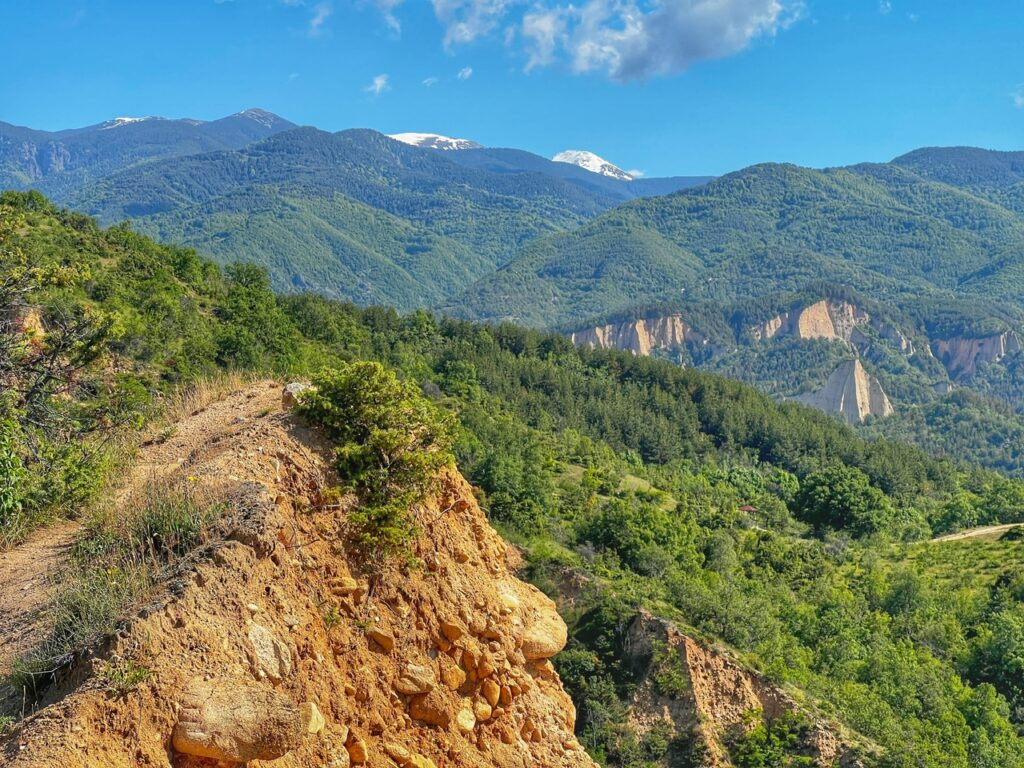
We might prefer these to any man made renditions of pyramids. And the real icing on the cake? The snowcapped Pirin Mountains crowning the top of the emerald carpet below.

A very poignant sign which translate to, “If you don’t like what you get, change what you give.”
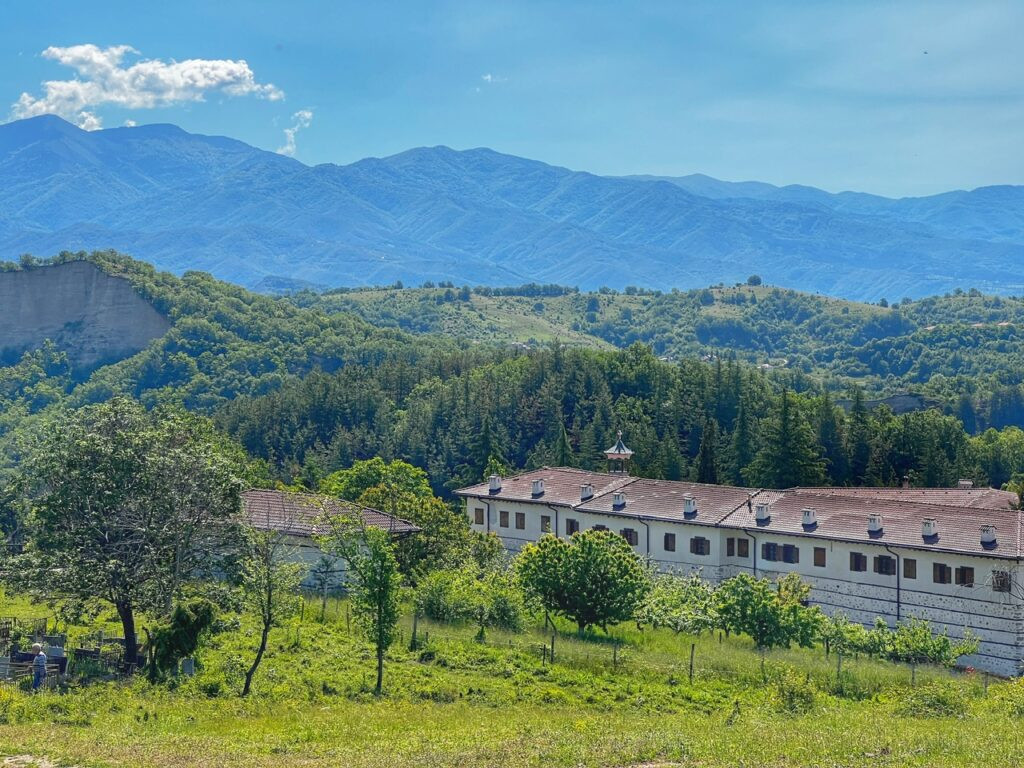
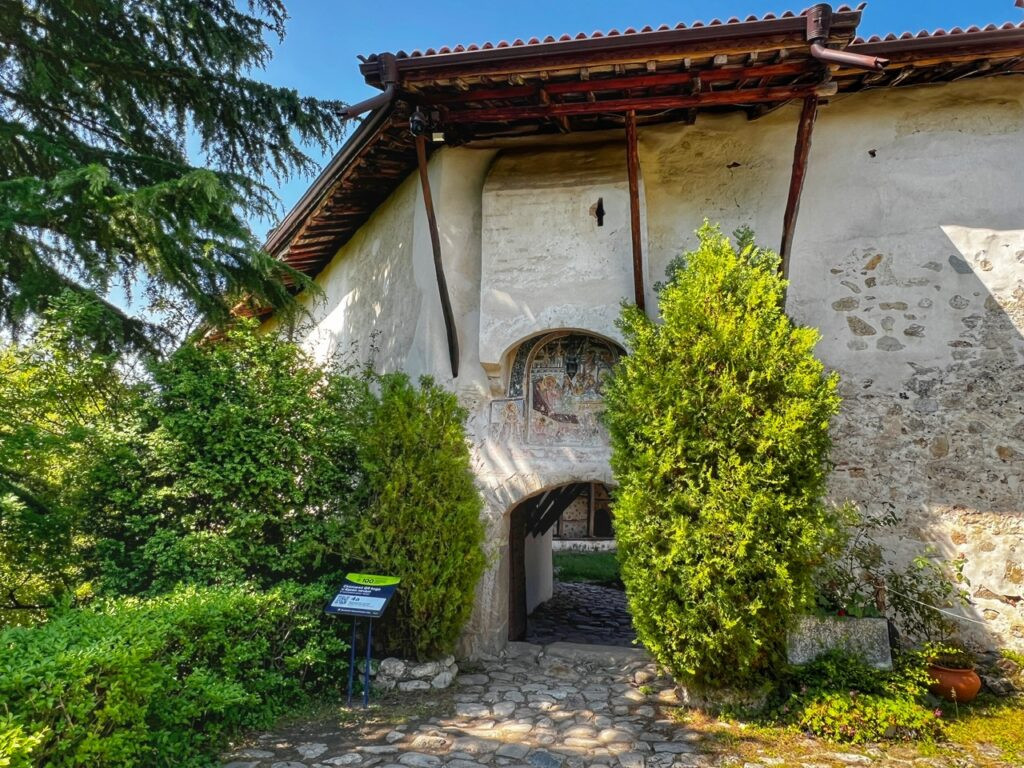
We then arrived to the edge of the Rozhen Monastery, which is free to enter and on the list of unique places to visit in Bulgaria, designated by a tourism-style passport bandwagon we need to jump on.
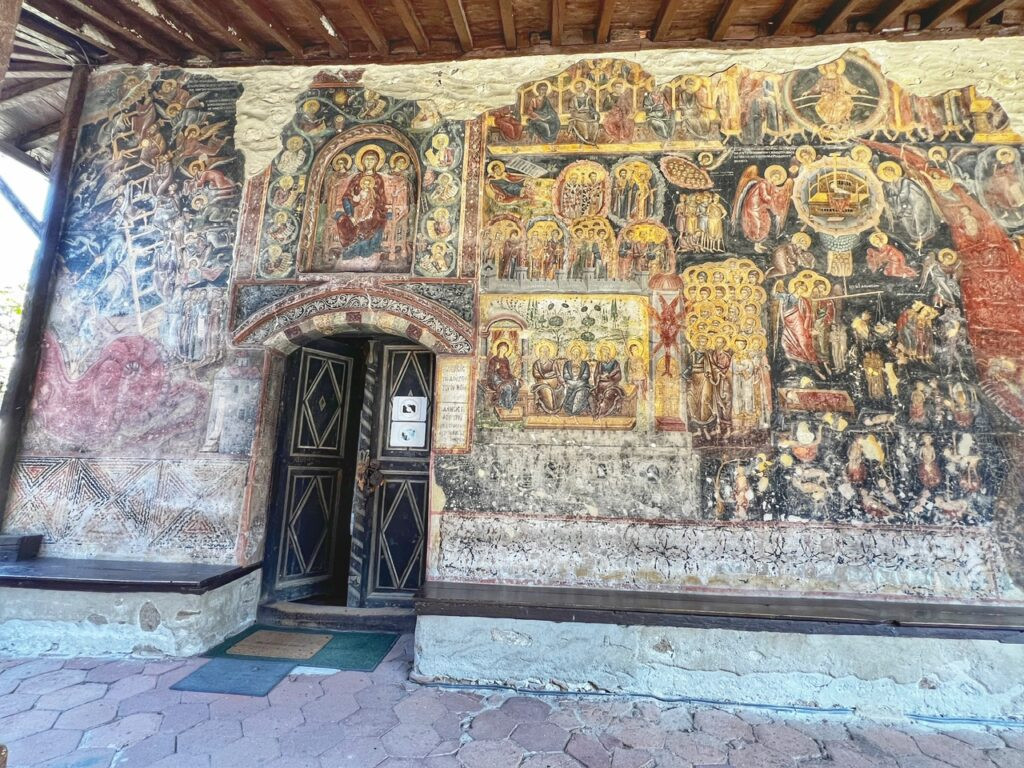
What’s interesting about the Rozhen Monastery is that no documentary evidence is left to tell who founded it, or even when it was founded. A local tradition holds that St. Ivan Rilsky (St. John of Rila of the Bulgaria’s famous Rila Monastery) had lived for some time here before he settled in the desert of Rila. The oldest objects found at that place are from the 13th century. In the courtyard of the monastery, north of the church, in a tomb discovered by chance, were found decorations and coins dated from 1250-1285. The marble frieze over the door, which leads to the central part of the temple, is from 13th or 14th fourteenth century. The construction of the church and part of the buildings reveals that they pre-date the 15th century.
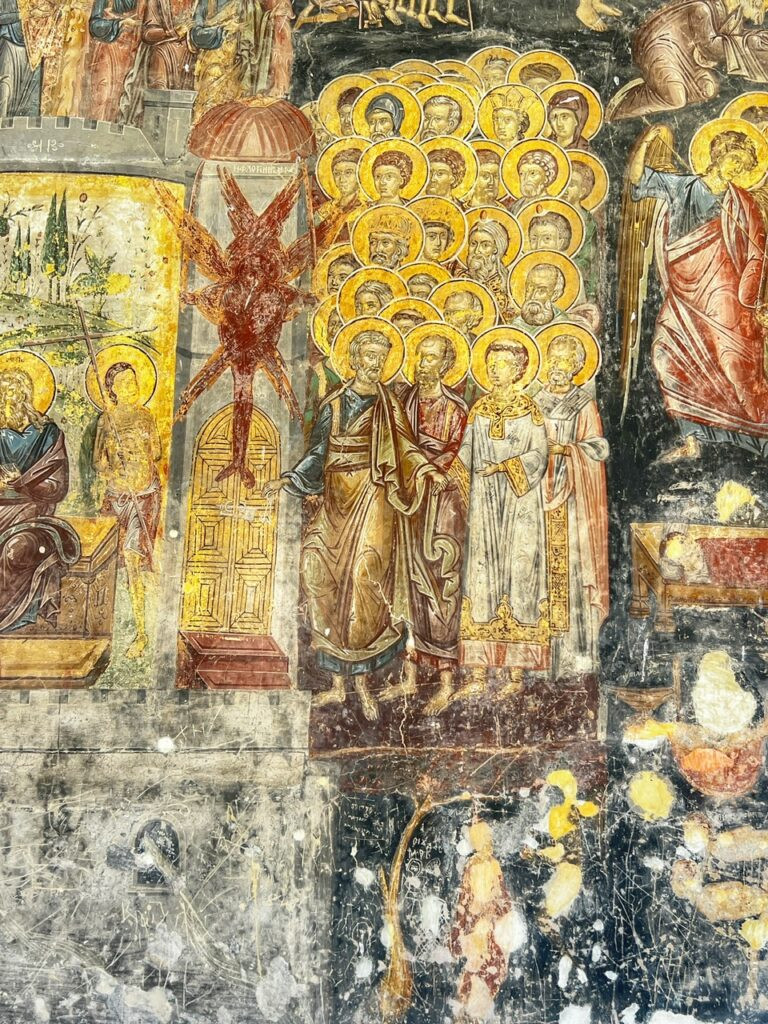
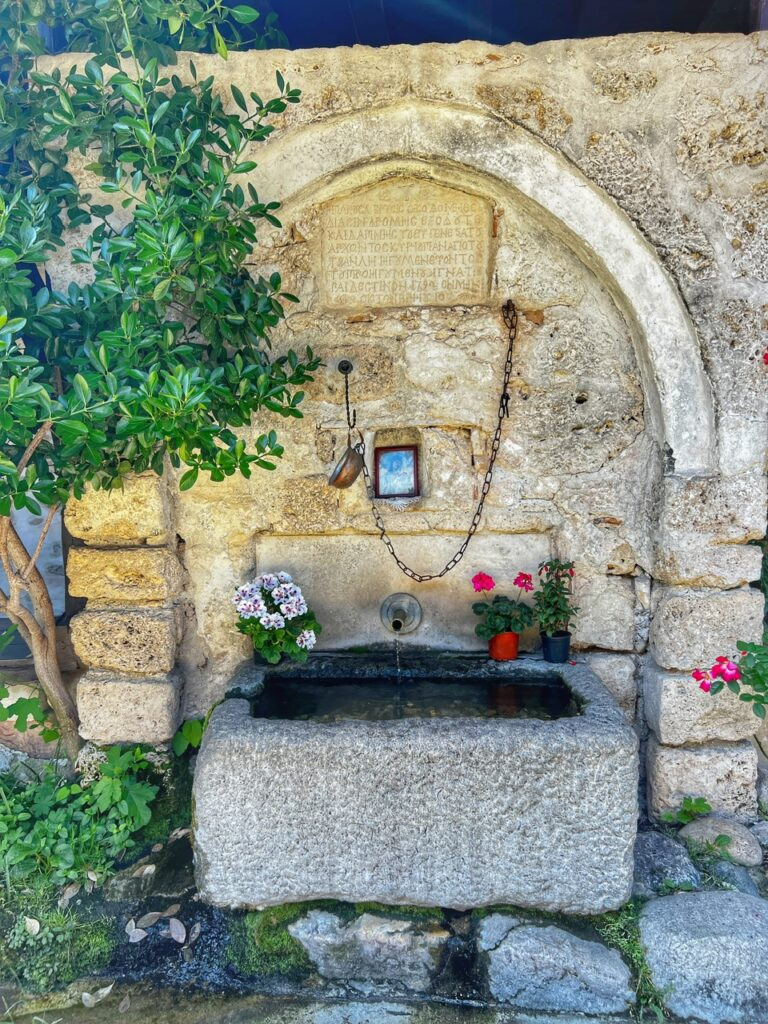
Regardless, it’s old. And it is enveloped in gorgeous frescoes that support this as well. Like so many places in Bulgaria, monasteries are a wonderful place to fill your water bottle and have been throughout the ages.
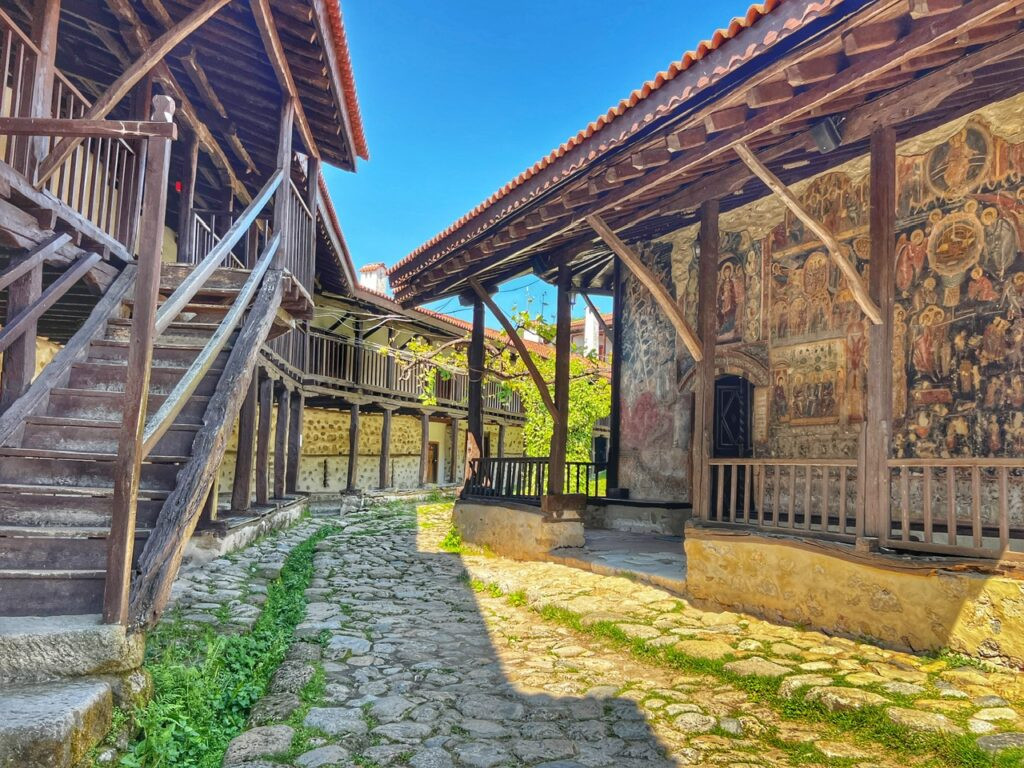
The inside of the church is even more dazzling, but unfortunately taking pictures was not allowed.
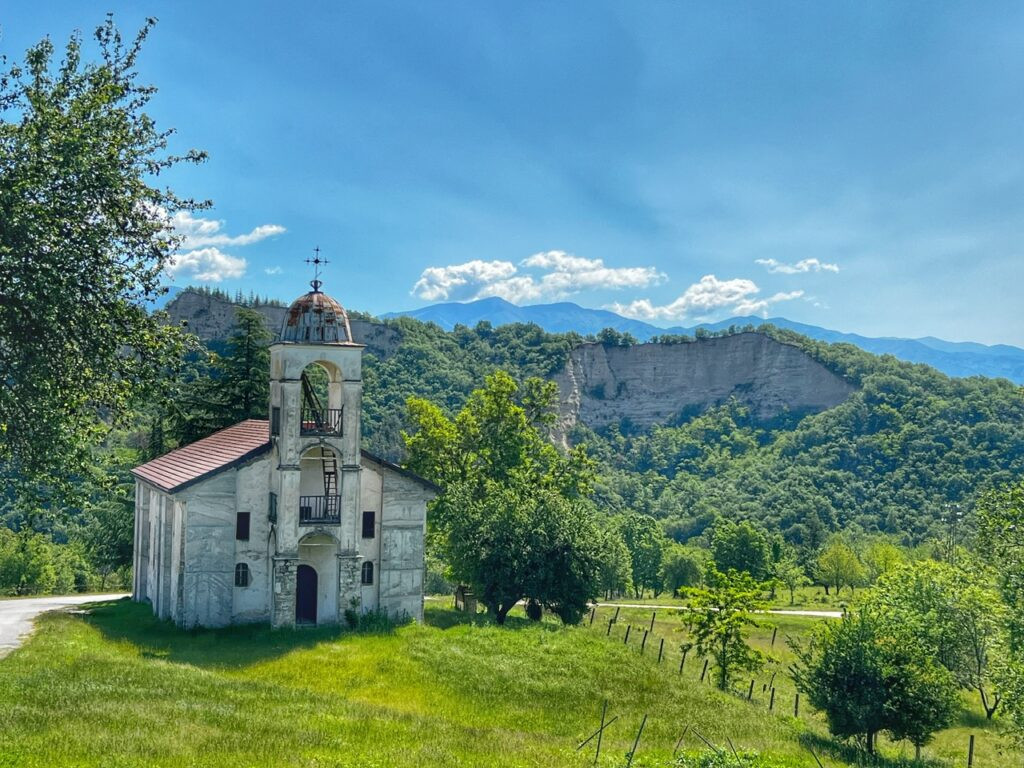
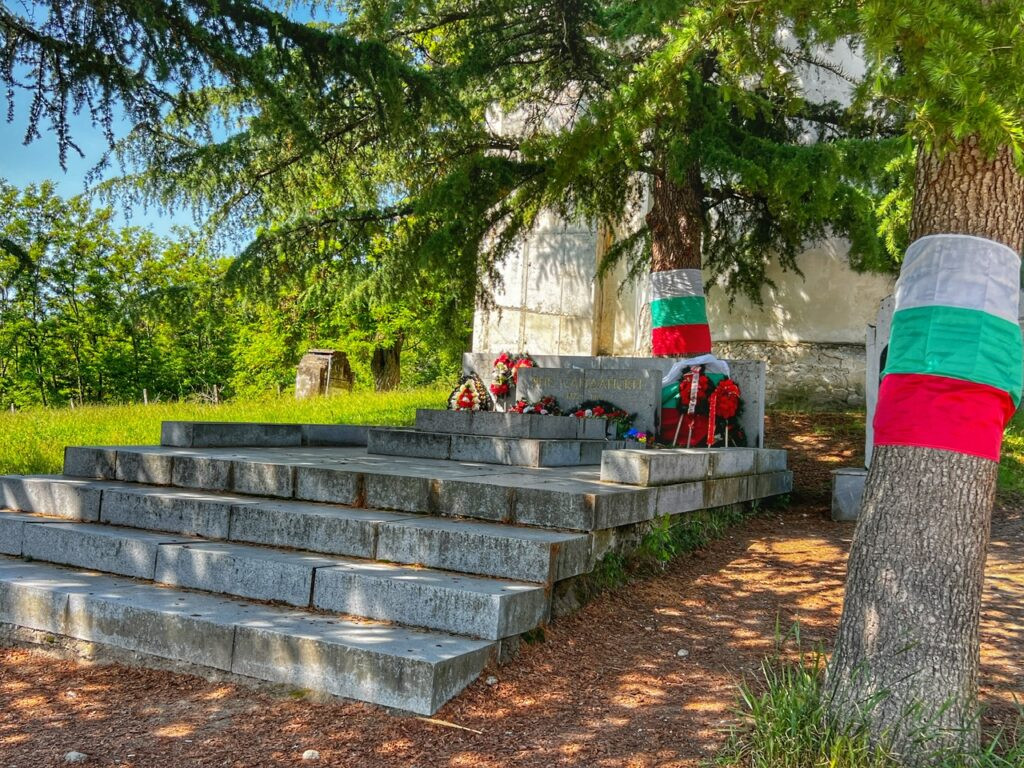
After departing the monastery, you head downhill about 20 more minutes to the town of Rozhen. On the way you’ll pass a more modern church, which houses the final 1915 resting place of Yane Sandanski, who was essential in the liberation movements of the early 20th Century and of course, the namesake of the town in which we stayed. His grave was marked with an inscription which says, “To live means to fight. The slave—for freedom, the free man—for perfection.”
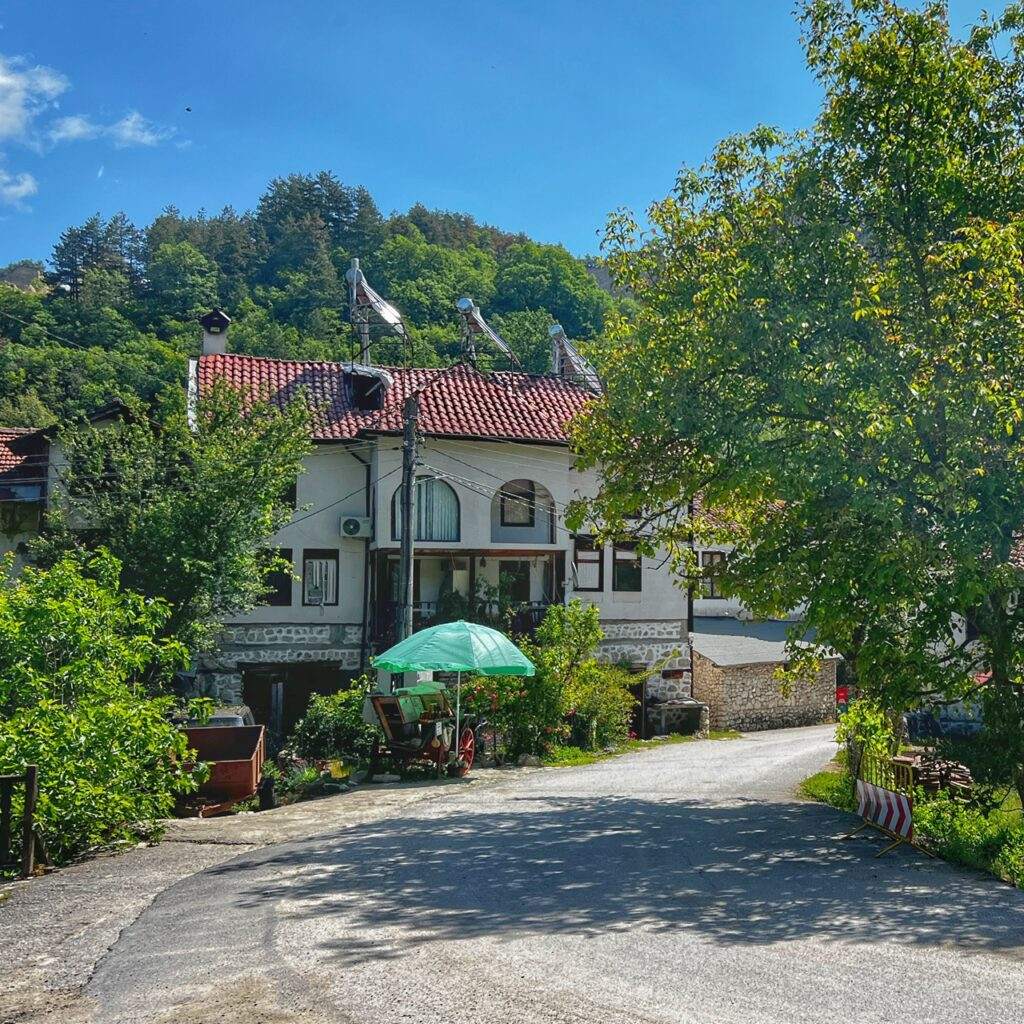
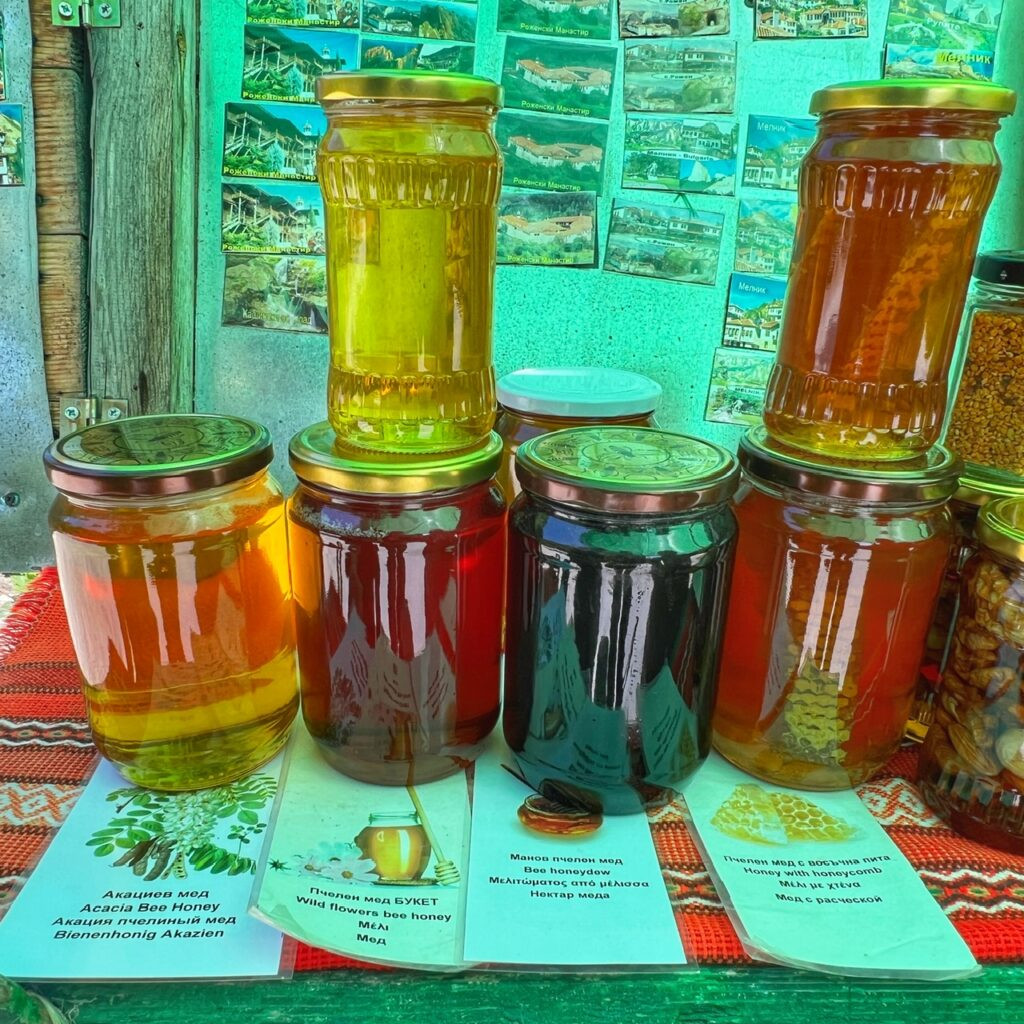
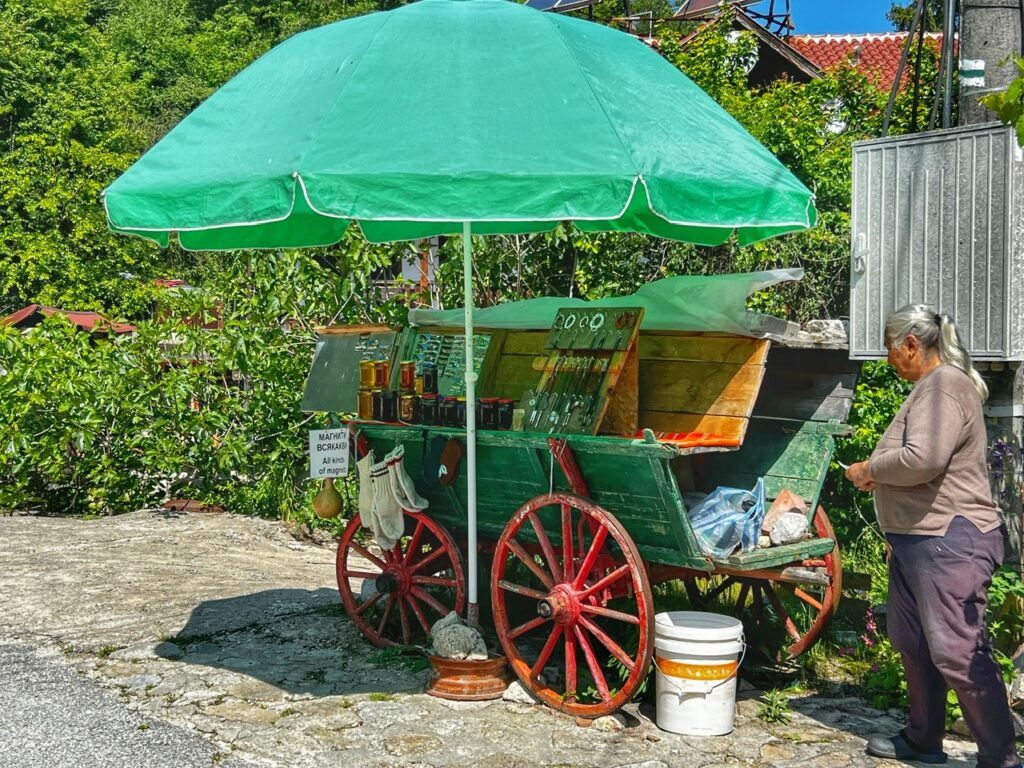
Entering the village of Rozhen, where we immediately met a kind and weathered woman at her honey stand. After a sampling of all four flavors, we settled on a darker selection called “Bee Honeydew.” Its taste was utterly irresistible and cost about $4 for a jar. The lady did not want us to take her photo, but here is her stand. In addition to honey, she sold “all kinds of magnets.”
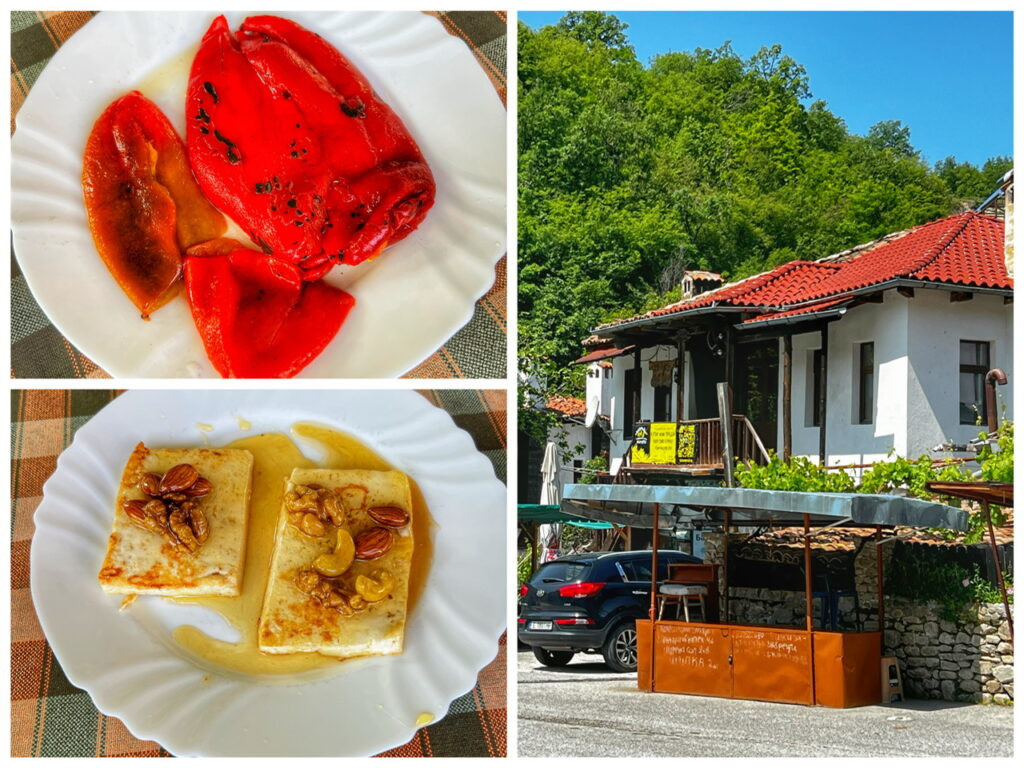
Once in Rozhen, we grabbed a seat at the first restaurant we saw for lunch, which was simple and included roasted red peppers, Bulgarian cheese with walnuts and honey, and a chicken kovurma hot pot. With these three items, a glass of wine, a glass of ayran, and a small tip, the bill came to $20. Eating out three meals on this little excursion was far more than we expected! ($70)
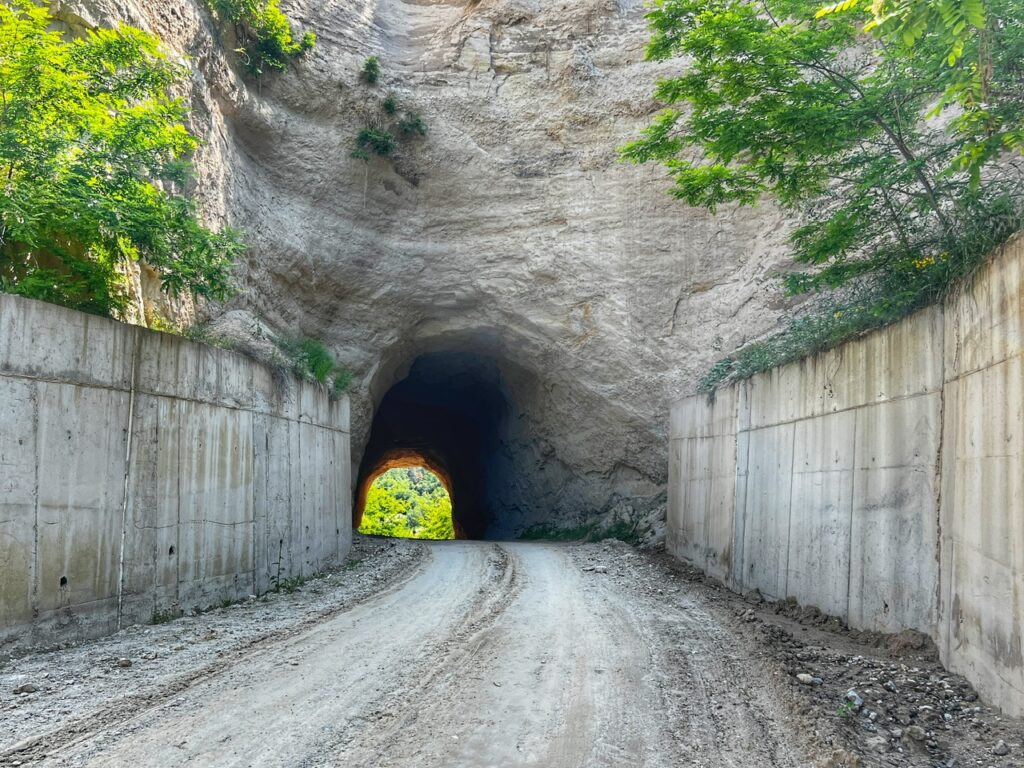
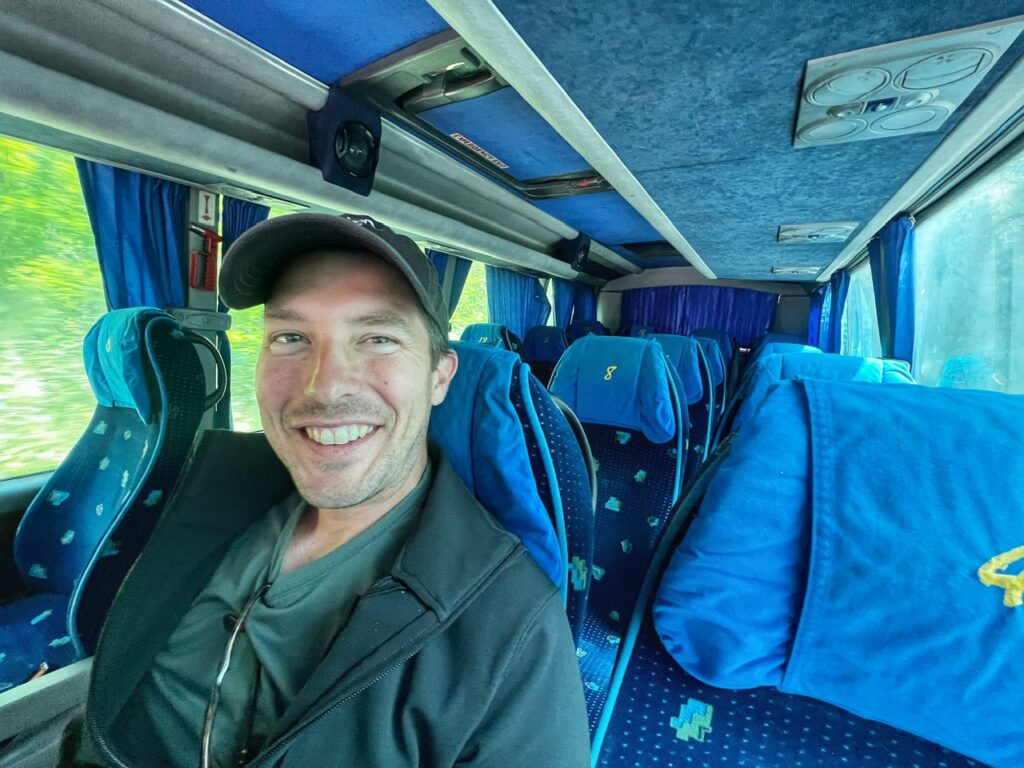
After our lunch, we wandered east of town to check out this remarkable tunnel which linked the road to Lyubovishte, and then jumped on the cigarette smoke-infused mini bus back to Sandanski ($6.84/two tickets). It was a perfect getaway to celebrate Greg’s 47th!
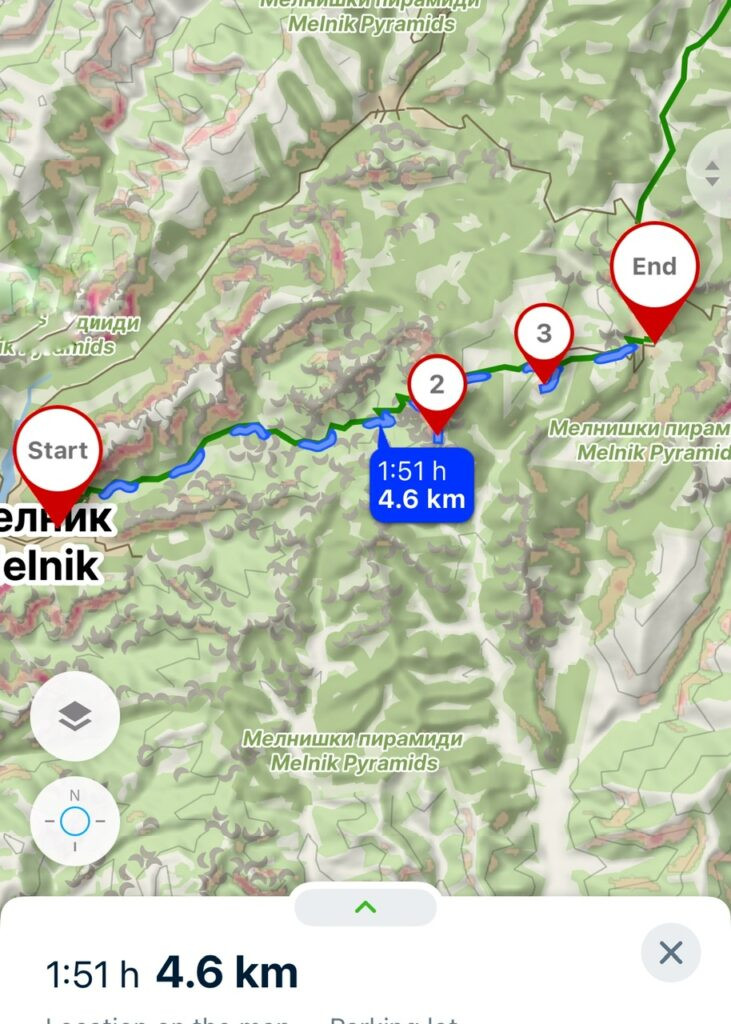
Our hike from Melnik to Rozhen.


